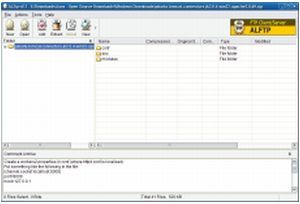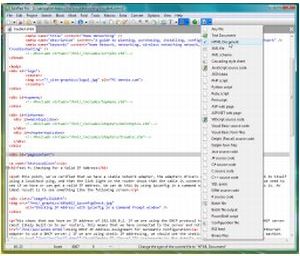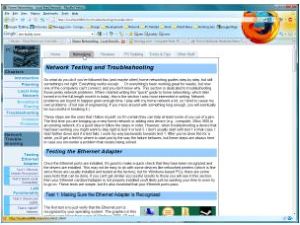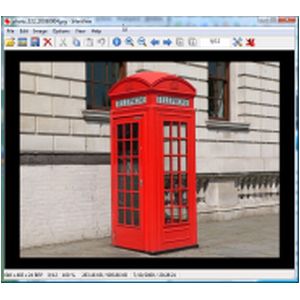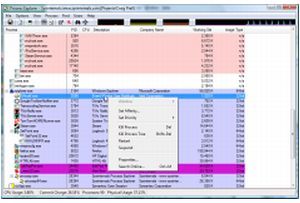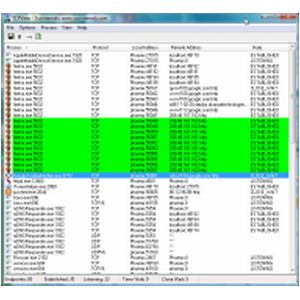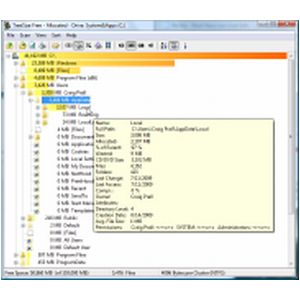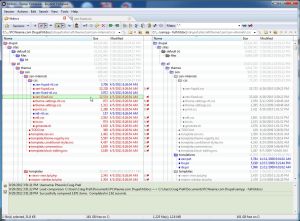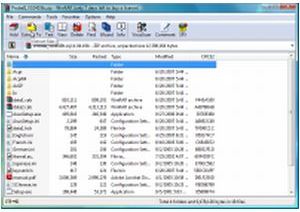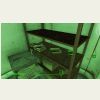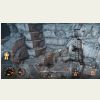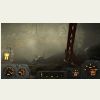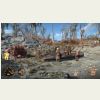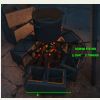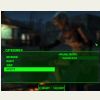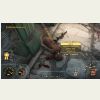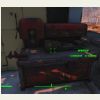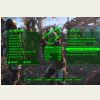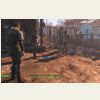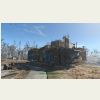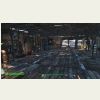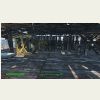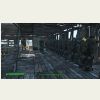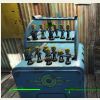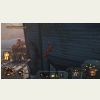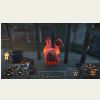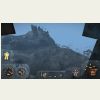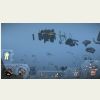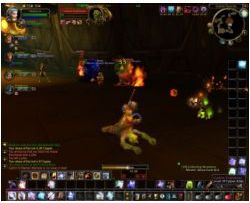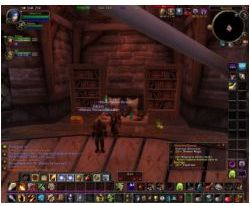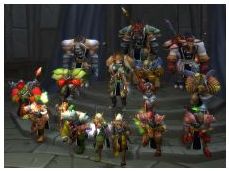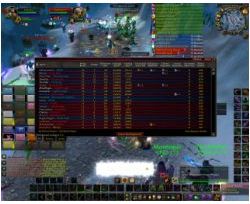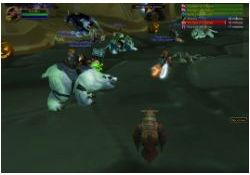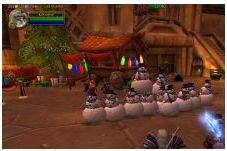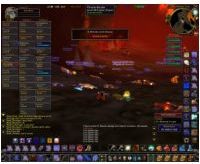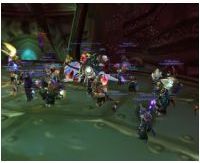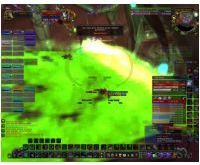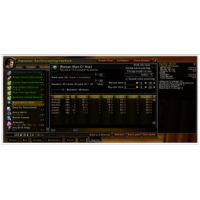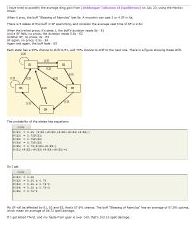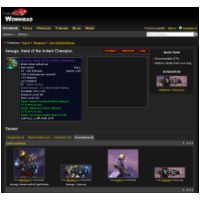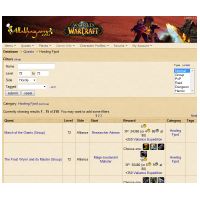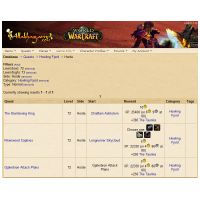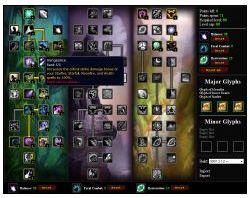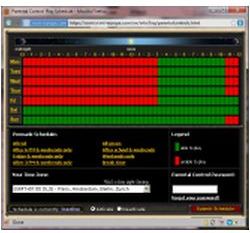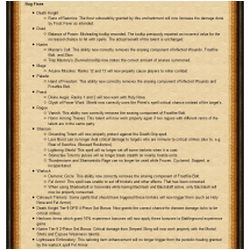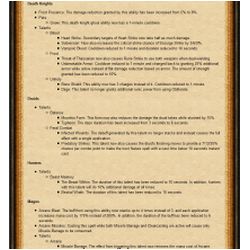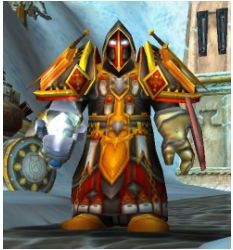Real User Reviews
Real User ReviewsReal User Reviews
Reviews of software and hardware that I use (or at least tried). Some of these will be longer and some just quick blurbs, but all will be products that I have actually used and generally used for a while.
I've broken my reviews down into the following:
Software
SoftwareSoftware
Welcome to the software review section of the site. This section is a partial list of the software I use. I mainly want to spread the word about some free or low-cost software that I can't do without. However, this section does not cover computer games. To do so, go to the computer games review section.
Must-Have Free Software
Must-Have Free SoftwareStrangely, when I first started using computer software over 30 years ago, virtually none of it was free. Linux wasn't even a thought yet. Word processors really weren't either for that matter. As I was making this list, I realized that with the exception of Windows and the Microsoft Office suite, almost all of the productivity software I use is free. For a living, I do Java software development using Eclipse as my Integrated Development Environment (IDE), which is free. I used to test using the Apache web server and the Tomcat servlet container, both of which are free. Much of my other editing is done using EditPad Pro, which isn't free but has a free little brother that I did use for a number of years. I browse the web using Firefox (or Internet Explorer when forced to). To maintain this web site, I am using Drupal, which is also free. I use IrfanView to handle the images. For testing this site, I use Apache (running under Xampp. If you don't know what most of those are, don't fret. I won't be asking you to take a quiz. I won't dwell on the programming-specific software. Instead, this section is dedicated to the free software that I use often if not daily, and that I hope you find useful as well.
The List
First, I'm going to start off with a simple list with short descriptions. As I get time, I will do reviews of some of these, but for now, it's just a list.
|
ALZip - ZIP File Program Everyone who uses the Internet needs a ZIP file to expand and unbundle files they've downloaded. Windows XP and Vista can open ZIP files if you click on them, but I still prefer a standalone program to un-ZIP archives and to create new ones. There are a number of free ZIP utilities out there, but AlZip is one of my favorite free programs. One thing you will probably want to change upon installation is the preference named "Create new folder." It is found on the Tools -> Preferences -> Context Menu dialog. Uncheck it if you don't like all your new folders to be named after birds rather than New Folder. WinRAR is still a superior program to AlZip, but WinRAR is not free. WinRAR can open things that AlZip can't, however. |
|
|
CDex - CD Audio Extraction There are quite a few audio extraction programs out there to turn your audio CDs into MP3s that you can play on your iPod, in-car MP3 player, etc. WinAmp, listed below, is one of those. So it Microsoft's Media Player. CDex is at version 1.70 beta 2 and has been for years, and it's not clear that any development or updates are being done for it. That said, it has some of the most flexible and extensive configurations of the audio encoder that I've found. The variable bit rate recording even manages to capture the most dynamic, stubborn audio tracks. I've tried others, but I keep coming back to this one. |
|
|
EditPad Lite - Text File Editor EditPad Lite is a very good, general-purpose text editor. It makes a wonderful replacement for Notepad. It has very good search and replace tools, extensive undo and redo, allows a large number of text files to be opened in tabs simultaneously. The program is perfect for opening readme and other text files that are released with drivers and programs. I used EditPad Lite for a couple of years, but eventually found that I needed some of the features only found in EditPad Pro - most notably the regular expression search and replace and the hexadecimal editing. If you're a programmer, the syntax coloring and highlighting in the Pro version makes it worth the $50 price tag, but for everyday use, the Lite version will serve you well. |
|
|
Firefox - Web Browser Firefox is by far my favorite web browser. My favorite extensions make it indispensable. My list of must-have extensions is:
|
Must-Have Free Software (Continued)
Must-Have Free Software (Continued)The List (Continued)
|
IrfanView - Image Editor IrfanView's author describes it as an image viewer. That it is, but he's being modest. IrfanView can be used to crop, resize, rotate (even lossless JPG rotation), annotate (with standard paint tools), brighten, sharpen, recolor, resample, convert to grayscale, and just about anything else you can imagine you'd ever want to do to a photo or other image. Specifically for photos, it has red-eye reduction. It can use a scanner to get an image and the latest version can grab text from an image using OCR provided by a plug-in. It has the ability to batch rename images in a directory or batch convert them (such as to resize all images at once). It has a thumbnail tool that can be used to quickly create thumbnails, contact sheets and even a set of HTML to allow the contact sheet to reference the full-size photos. If that weren't enough, it has one of the best screen capture capabilities of any program I've used. Suffice it to say that if you see an image on this site, IrfanView has probably processed it in some way. Be sure to download the main program and the plug-ins. They are separate downloads.
|
|
| PureText PureText is a very small, simple System Tray application that serves a very singular and useful purpose. When the hotkey is used, it pastes whatever is currently in the screen buffer as plain text. This is wonderfully useful when grabbing text from a highly formatted source like a web page or Word document. If you've ever grabbed text from a web site to stuff into an email and got all the undesired HTML formatting with it, this is the app for you. PureText doesn't have a screen to really capture; it works by pressing Windows-V rather than Ctrl-V when pasting. | |
| Process Explorer This is another recommendation that's borderline "nerd-only." That said, it is useful to almost any user at some time. If you've ever found yourself in the situation where something is using all of your memory or all of your CPU, but didn't know what or why, Process Explorer can help. It can also answer that question about what processes are holding onto which files/folders that's preventing you from deleting them or ejecting that USB flash disk. It takes a while to get a feel for what it's telling you, but once you have the basics, it can help a lot with figuring out what your system is up to. | |
|
TCP View - Network Connection Tool This recommendation is another possible "nerd-only" one. It's called TCP View and hails from the same source as Process Explorer (namely Mark Russinovich who now works for Microsoft). Even if you don't particularly need to do a lot of network monitoring and testing, this little tool is great for investigating why your network may be running slow. This tools ties network connections to the tasks on your system that are using them. It's good for discovering connections you may not have been aware of and you can see the relative amount of activity on those connections. |
|
| TreeSize Free - Disk Space Tool TreeSize Free from Jam Software is a tool to show where all the space on your hard disks (and disk partitions) has gone. Jam may say this best on their web site when they say, "Every hard disk is too small if you just wait long enough." They are right. You can easily drill down into folders and ferret out where all the disk hogs are. You may not be able to do anything about some of them, but it's amazing how many times one can make a copy of the same file and not notice or have backups of files that haven't been needed for years. It often just turns up some surprises. |
Must-Have Low-Cost Software
Must-Have Low-Cost SoftwareThe best things in life may be free, but occasionally, paying a little bit of money scores you some good stuff, too. One approach that software companies use is to put out a free version that and a for-pay version with additional features. This approach worked with me in the case of EditPad Pro. I'd used EditPad Lite for a year or two before I ran into a situation were I just needed a couple of the additional features. By that time, I'd used it so much that I really didn't mind paying for the "Pro" version. I almost felt like I owed them that much. Another approach used is to put out the software with a fairly long "free" period to get users hooked. WinRAR gives users 40 days before it "requires" users to pay for it. However, in WinRAR's case, it still works as before, but reminds you that you should pay for it.
The List
| Beyond Compare 4 CSDiff is a good free file comparison tool, but Beyond Compare 4 is the tool for people that need to compare files and directories in a serious setting. It integrates with Windows Explorer for easy comparison and has incredibly flexible matching. It also can create a variety of reports for change reviews. The standard version is fine for most people, but I use the Pro version for its 3-way text merging and source control system integration. | |
|
EditPad Pro - Text File Editor EditPad Pro is the big brother of EditPad Lite. The "Pro" version adds to the very competant Lite version with some features that are pretty hard to do without once you get used to them. Some of these are mostly of use to programmers, but others would be useful to anyone that edits text files. One is the coloration of the files based on their extension (such as .htm or .html). The already good search and replace tools are beefed up with regular expression searching and named grouping replacement. Those who edit huge text files would appreciate EditPad Pro's ability to open files even larger than 2GB. JGSoft has a web page that outlines the differences between the two. |
|
| WinRAR - Archive (ZIP and RAR) Tool In my must-have free software section, I tout AlZip as a good free tool for handing ZIP files and it is. However, I occasionally run up against a file (especially those that are self-extracting .exe files) that steadfastly refuses to open properly in AlZip. WinRAR just opens them and life goes on. $29 US for a single copy. $21 USD for 2-9 copies and further discounts for more copies. |
PC Games
PC GamesPC Games
Welcome to the games review section of the site. Considering how many games I play, you'd think there'd be a lot here. I've been spending a lot of time on my first article, which has turned into a lot more than a review. It's something I've been kicking around for a while, and finally got the chance to write.
Fallout 4: More Fun Than a Barrel of Radioactive Waste
Fallout 4: More Fun Than a Barrel of Radioactive WasteFallout 4 is an incredible accomplishment in gaming pure and simple. From November 10th, 2015 until February 21st, 2106, I spent over 400 hours playing this game. Believe it or not, there are still areas I have never seen and quests I haven't done. This game has been reviewed to death, so rather than a point-by-point review or walkthrough-like review, I'm going to review what I found exciting, surprising, enjoyable and even a few disappointing points about the game.
My assumption is by now, everyone who really, really loved Fallout 3 and Fallout: New Vegas has finished Fallout 4 (DLC notwithstanding). I mean - over 400 hours! - really!?! That's what Steam claims anyway. Who does that besides me? (Let's ignore the 300+ hours I spent in Fallout: New Vegas with the original content plus all the DLC for that.) Even so, I'm going to make a conscious effort to put spoilers in a spoiler tag like the one below. The tag doesn't support a "level" for the spoiler, so I'll put (Light), (Normal) and (Heavy) before them somewhere to give an idea of how much will be spoiled.
Not a real spoiler. (Light)
[spoiler]If this had been an actual spoiler, you may just have learned a little bit you didn't want to know.[/spoiler]
With that warning, on with the show!
I'm not sure why anyone would read this unless they were already interested in and familiar with the game, but just in case, here's the game in a nutshell. You start the game by picking a character - male or female - and then edit your body and facial features. Some people spend hours right there. Then some events transpire that cause you to seek shelter in a Vault-Tec vault that preserves the human race in the event of a ... um, an unspecified global disaster. No surprise there; you start out in a vault in pretty much every Fallout game. In this one, you start outside, but you enter the vault very shortly after the intro. (See, more or less no spoilers.) Time passes, your son is stolen from you, and you set out from the vault to get him back. And that's the setup.
What happens after you leave the vault is very much up to you. You need to explore to try to figure out where your son was taken, but you can pretty much take all the time you want to do that. There is a main storyline set of quests to answer that burning question, but also dozens - or perhaps hundreds of side quests as well. When exploring, you can be bold and brash - a regular member of Balls and Bayonets Brigade as it were (to steal a line from the TV series Firefly) - or quiet and stealthy like a ninja. Both ways and everything in between can work. You can try to make lots of friends or enemies - and most likely, some of each. Eventually, you progress through the game to find out what became of your son.
If you have played Fallout 3 or Fallout: New Vegas, then you probably have a pretty good idea of how you progress. You exit the vault with pretty much just the clothes on your back and maybe a decent pistol and a bit of ammo. You explore, discover interesting locations, find friends and make enemies. Your friends ask you to help them or tell you how to progress along the path to finding out what happened to your son. From exploring, demolishing the previously-mentioned enemies and completing quests, you get to level up and gain new skills. You will also find, be rewarded with or trade for better guns, armor, information, etc. So how does one spend as much time as I did at this? Well, for one thing ....
It's hard to overstate how big this game is. It's a decent-sized map just to traverse. I walked to (or ran to) every shiny object that looked remotely interesting. Even near the end of the main story quest, I would occasionally open what looked to be an unremarkable door or hatch and find a detailed, fully-fleshed-out level (or set of levels) inside or underneath. Some of those were 10-15 minute distractions. Others were hour-long excursions with their own self-contained story. What astonishes me is that Bethesda is perfectly willing to allow players to skip large areas of the map and still finish the game. If you spend as much time as I have in the game, you are probably getting carried away. On the other hand, if you finish the main quest line in less than 40 hours, I would bet you saw less than 1/3 of the areas in the game. It's your money.
The map is a bit deceptive somehow, though. Just as they were in Fallout 3, locations in the game are tightly packed together. Even on foot, traveling from one location to another that seems far away doesn't seem to take as long as expected (assuming one can resist all the other shiny objects along the way). It's as if they stole a lesson on dimensional transcendentalism from Dr. Who. Clicking on the icon below will expand the map showing what locations I had discovered. I grabbed this just after "finishing" the game. (Sorry for having to stitch it together from pieces.)
As a thumbnail, the map isn't a spoiler. However, the larger view(s) is (are) a light to medium spoiler - especially if you view the high-resolution map.
If you look closely at the map, you'll notice an island on the lower right-hand side that I've not investigated. Oh, well. It's a good bet that there's something to discover in just about any of the areas on the map that look suspiciously open. I watched a few Fallout 4 videos on YouTube since I finished, and I definitely missed a whole lot of places. Luckily, once a landmark is discovered, you can fast travel from there to any other discovered landmark. The size of the map doesn't become tedious to navigate. Without fast travel .. I shudder.
Fallout 4: More Fun Than a Barrel of Radioactive Waste (Page 2)
Fallout 4: More Fun Than a Barrel of Radioactive Waste (Page 2)In any game of this size, there are lots of things to discover, but sometimes, this game goes above and beyond just being "good enough." The topics in this section could all be considered minor spoilers, I guess, but very minor. (If it's more than that, I'll put the discussion in a spoiler tag.) I tried to get a sample set of the kinds of special things that Bethesda slipped into this game. This is nowhere near a full list. I don't want to risk spoiling these.
The Third Rail, a bar in the old Boston Metro station in town called Good Neighbor, has a singer named Magnolia. She is typically either already singing or just starting a song when you enter. She will also sing another song if you talk to her and ask her to. I noticed that the songs seemed to be higher quality audio than most found in video games, and it's probably not just my imagination. I did a little digging and found out that the songs (five of them, if I recall correctly) were written and sung by Lynda Carter. (You may remember her as Wonder Woman if you're old enough.) She also does the voice of Magnolia in the game. If one or more of your stats is high enough, you can have a romantic encounter with her. Once you hear those songs in the third rail, they will be added to the rotation of songs on Diamond City Radio. I have a short clip below (posted on YouTube) so you can see and hear what I am talking about. If you have played through the Diamond City quests, you may be able to associate the lyrics in the clips to one of them.
Another one of the locations is Vault 81, which seems to be the only operational vault in the game - though there are other vaults such as the one you started in. I'm pretty sure I got sent there as part of a quest or it was mentioned by somebody I met.
It turns out you get different conversations from the Vault 81 locals depending on who you have as a traveling companion and what you are wearing. I was originally wearing power armor, and the residents seem envious, but apprehensive. I took the power armor off, and after that, I got special conversation options because I had put on the Vault 111 suit that I had left that vault with. One thing I especially liked was the background music that played inside Vault 81. I don't believe you hear it anywhere else in the game. (Medium spoiler)[spoiler]
Vault 81's questline is very good. If you pursue it enough, you will find out that there is a secret outer vault surrounding an inner vault. That vault was supposed to be manned by scientists researching the ultimate cure to all the viruses plaguing mankind. In a later phase of the research, the residents of the inner vault were to be the test subjects. The vault's overseer objected to the testing (as I think she was to be one of the test subjects) and sabotaged the recall system so that only three scientists made it to the vault when the bombs fell. Those three, the overseer eventually trapped and starved to death. There's more to the questline than that, but it's in the outer vault that I found the research robot Curie (the same basic type as a Mr. Handy) who has spent decades researching the cure for all the viruses given to a colony of mole rats. Curie can become one of your companions. She later goes through an amazing .. transformation if you get her affection level up high enough to get her special questline.
You don't have to ever go into Vault 81 to complete the main storyline, but if you do and take it to completion, which will take an hour or two, you get a new companion, a bobblehead, and if you are bitten by a mole rat - a -10 HP penalty for the rest of the game. You will find it difficult to avoid becoming bitten. I'm pretty sure I got marked as bitten because the Protectron robot I had hacked and had running point got bitten. (Yes, the robot got bitten.) You can recover if you take the single dose of the cure that Curie has left. However, that's needed to cure one of the vault's children that was bitten by a mole rat (before your arrival). If you take it, he dies, which pretty much makes you persona non grata with the vault. If you cure the child, you are rewarded with your own room. (I never used it once I got it.)[/spoiler]
Shaw High School, a former high school that is currently inhabited by super mutants, was the domain of one Principle Tanner. Tanner, a failed Vault-Tec salesman turned educator, was trying to improve the school's test scores by having students take Mentats. Better test scores meant more money to the school district - money the principal hoped to pocket. As part of the effort, Tanner enlists a delinquent student named Rusty to distribute the Mentats. One of the neat little details is that you (might) find a terminal taken over by Rusty, which he is using to keep a journal. The entries start out as one or two badly-spelled, wonderful examples of poor grammar. Rusty starts taking Mentats himself and the later terminal entries get more eloquent. He eventually gets smart enough to get a forged key to the principal's office then reads the messages on the principal's terminal and finds out what the principal is up to. Rusty ends up blackmailing Principal Tanner for half the money.
Dunwich Borers looks like a typical quarry. When I looked down into it from the top, it seemed like a quick frag & take. However, when I got to the bottom, I found a cave to one side that turned out to have a whole story of its own. In the cave, you run across lots of feral ghouls, which is no surprise since they are everywhere.
(Light)[spoiler]
The surprise is that when you encounter certain ghouls, you see flashbacks to when the ghouls were still human and worked in the cave as miners and foremen. At the very bottom of the cave, you find an irradiated well of water. There, you witness a flashback to when there was an altar at that site. In order to investigate the pool, you have to take off power armor or otherwise, you will never be able to swim up. I used a mirelurk cake that allows breathing underwater and a Rad-X to increase radiation resistance and swam down. It's almost just a deep, columnar pit or well except there is a cave that juts off horizontally very near the bottom. That cave ends at a different alter, which has a rare knife on it. I found the whole level really creepy.
[/spoiler]
I thought that Bethesda put in a little something extra even beyond that. While I was in the cave, there were occasional tremors. After I left the cave, I noticed that the ground still occasionally shook. Did I anger some beast from times gone by? That would be cool, but as it turned out, I hadn't. I had just recently put my companion in power armor. Whenever she ran to catch up to me, the ground would shake. It had probably happened before, but I hadn't noticed. The tremors inside the cave were for effect, but the ones outside the cave were from something else completely.
Diamond City Radio is one of the radio stations available on your Pip-Boy arm computer. Diamond City Radio's DJ, Travis "Lonely" Miles, starts off the game as a horrible, stuttering, rambling mess. Through your aid in a quest, you help him become a much better DJ. For which, he thanks you. On the radio. Over and Over. He does get much better, too. As mentioned above, once you visit The Third Rail, he adds five songs from the bar's singer, Magnolia. I also used the More Where That Came From - Diamond City Radio Edition Fallout 4 mod to add a bunch more songs. (More information on Fallout 4 mods is coming on the last page.) As you complete major quest paths in the game, Travis will report on them during his news updates. (That was also true in other Fallout games.)
Fallout 4: More Fun Than a Barrel of Radioactive Waste (Page 3)
Fallout 4: More Fun Than a Barrel of Radioactive Waste (Page 3)Fallout 4 contains lots of potential surprises. Some of these were supposed to be surprises, but some of them may only be surprises to me because of my expectations and my history with the previous games. In this section, I'm going to talk about a few such surprises. This will barely scratch the surface.
Stop! Thief! — Fairly early in my travels and while being accompanied by a companion named Cait, a tough, scrappy young woman with issues and a vaguely Irish accent, I was doing some building at one of the settlements. I had gotten out of my armor to save some fusion core juice. While I was building, we got attacked by super mutants. I'm pretty well leveled, armored and armed by this time, so I'm thinking to myself, "You poor, sorry bastards. This was bad timing on your part." I turn to run to my power armor .. just in time to see Cait get into it and take off.
Up to that very point, I had no idea that companions (or anyone besides Brotherhood of Steel NPCs) could use power armor. So there I am chasing after Cait and my power armor, trying to get her into a conversation so I can make her get out. She wasn't having it. I'm yelling at my computer, "Get out, you bitch!" as she's mowing down super mutants all over the place. Sounds kind of funny in retrospect. I just couldn't believe she Bogart-ed my power armor! Of course, after that, I had my various companions use power armor quite often. However, most companions damaged the power armor they were using practically from the moment they got into it, and usually very badly. If there was a cliff or building they could fall off of, they never hesitated to do so. I eventually just left them out of the power armor altogether. Saved me tons in repairs.
Don't Start What You Can't Finish — Once, I was visiting a settlement named Country Crossing. It happens to be near but also under a group of Gunners that have made their home on an overpass. Now, I have no idea why, but the Gunners started shooting a random brahmin (cattle) nearby. I saw what they were doing, but I wasn't concerned, really. The settlers, however, got pissed. They pulled out their weapons and took off out of the settlement and attacked the Gunners. Keep in mind, the Gunners were shooting at some random brahmin - not the settler's brahmin. Maybe, they were all P.E.T.A. members - I don't know. The settlers were winning as I had put most of them in decent armor and gave them all better weapons. Then they ran up against the Gunner Captain in power armor and with a minigun. At that point, I came to the rescue. I still have no idea what made them decide to go on the offensive. I'm sure it's scripted somehow, but it surprised the heck out of me.
Fun With Elevators — At some point, Bethesda had to figure out what to do about companions and how they navigate elevators. The problem was that a player enters an elevator, companions sometimes just won't follow. They often stop and stand just outside of the elevator. There's no way to push them into one that I could find. Bethesda fixed this by making the elevators and/or companions "magical." When I took an elevator, if the companion wasn't inside, they would either magically appear at the place where I got out or teleport into the elevator with me somewhere along the trip. Eventually, regardless of the companion I was with, I would just push the elevator button without even hesitating to wait for them. The clips below are of a companion named Piper Wright performing such magic. The first one shows her just magically appearing on the top floor of a building without ever being on the elevator. (There is no other way up that I know of - especially not one that would get her up there in seconds.) The second shows her teleporting into the elevator while it is traveling.
Roaming Quest NPCs — If you decide to help support settlements, every so often you will get told that a settlement needs your help to fight off ghouls, or raiders, or super mutants, or rabid badgers, or something else that they just can't fight off themselves (even if you have given all of them very good armor and weapons and they outnumber the invaders 2:1). They ask you to help (i.e., That is, to kill everyone at some other location on their behalf).
I finished one such quest and went back to the settlement to turn it in. There was nobody there with the little square-bubble icon over their head indicating I could end the quest by talking to them. I searched everywhere in the settlement. Finally, I turned off all other quests so only that one was shown on the map, and the person I needed to talk to was way far away from the settlement I had just helped. I'm in WTF mode at this point.
If you have the perk that lets you set up supply lines, you pick one of the settlers to start a route between their home settlement and some other settlement. They are technically still part of the settlement; you even have to save a bed for them in your total bed count in order to keep the settlement happy. However, they travel - somewhat slowly - between the two settlements and their tag changes from "settler" to "provisioner." It also seems that in some cases, the quest giver/receiver for settlement quests are randomly picked. In this case, the provisioner was chosen as the person to turn the quest into. Luckily they were pretty near the other settlement so I could fast travel and find him. I think I still had to wait to turn the quest in as the settlement nearby was up in arms fighting off a pack of vicious dogs, but at least I found him.
Vegetable Starch is Adhesive — I hope that's not a spoiler. I'm pretty sure it's not meant to be. While it's possible to complete the entire game and never craft (much of) anything, most of us will probably pick up the perk to craft armor or weapons modifications. I picked up both pretty much from the start. I quickly came to realize that one can never have enough adhesive. I would drop weapons and armor to make room for duct tape and wonderglue. It was pathetic. At some point, I was cooking up something and noticed ...
That's five .. yes, five .. adhesive each. The recipe was probably always there, but I hadn't noticed. Once I did, I had all of my settlements making the ingredients. Vegetable Starch may be the single best reason to even have a settlement.
Named NPCs Can Be Killed — Any time a settlement is attacked, almost all the settlers join in on the defense - even if they are armed with just a corn stock. (Actually, they all come with a pipe pistol to start with, but the corn stock might have been more effective.) In many settlements, there are already a few settlers there when you discover it. (In gaming jargon, those settlers are also known as non-player characters or NPCs.) Those settlers have a name, and they usually give you the quest(s) you need to do to get the settlement "aligned" with you. (Once aligned, you can use the workshop and build there.) A number of times during a skirmish, I had seen the named settlers incapacitated - where they sit on the ground and stop fighting or fleeing. However, they always recovered after the fighting ended. I had just taken it for granted that all named NPCs in a settlement could not be killed. That turned out to be wrong.
The original settler in the settlement Egret Tours Marina is Phyllis Daily. Sometime after I had become aligned with that settlement, I went back to find her dead near the entrance to the building where I found her.
I'm pretty sure that in this case, there's at least one quest path where I would have to at least fight, if not kill her, so she had to be killable. I didn't go down that path, but I assumed even if I did, she would become incapacitated and the typical "You win! I give up!" ending would ensue. I guess not. I wasn't at the settlement when she was killed, so I don't know how or when it happened.
Fallout 4: More Fun Than a Barrel of Radioactive Waste (Page 4)
Fallout 4: More Fun Than a Barrel of Radioactive Waste (Page 4)I have been asked by people who started Fallout 4 after I did if I thought settlements are worth the effort to build up. More or less, I think the answer is "No, not really." The game itself, doesn't really give a lot of clues to why anyone would want settlements. After 400 hours of playing this game, I don't think they really add much to the game. Each settlement does offer one or more quests, but those are almost always some variation of "Bad People® are attacking us from That Place™. Go there and kill them." You get plenty of those in your other pursuits. If I had, in fact, ignored settlements as much as possible, this would likely have been a 200 hour game. Maybe less.
As stated earlier, in order to use a settlement, you must become "aligned" with it. In some cases, you just need to reach and activate the settlement's workbench, which is a big red device that reminds me of a metal lathe. For most settlements, you need to complete one or more of the aforementioned "kill all" quests to satisfy the settlement's inhabitants. You start the game aligned with the town you started from, Sanctuary (Hills). It's empty after you emerge from the vault except for Codsworth, the robot butler you had before the war, but you can complete a quest very early in the game that brings a group to the settlement. I don't see any way around settling at least two of the other locations I know about as they are important to the unfolding story. I'll leave out the names here since that might be considered a spoiler. I believe that with just the "required" settlements, you could plant enough corn, tatos, mutifruit and get enough purified water to make all the vegetable starch needed for adhesive for upgrades, which really was what I found to be the biggest benefit to having them.
Once aligned with a settlement, you can go into "workbench" mode that lets you scrap things around the settlement you don't need and build things you do need from the scrap you find around the world. Unlike previous Fallout games where I left junk items where I found them, I often found myself preferring some types of "junk" over low-level weapons and armor. Although some weapons and armor make for good scrap, too. If you are a big fan of The Sims or Minecraft, you may really enjoy this. There are people who feel settlement building is the best part of the game. You can also plant crops and assign settlers to work them (though there is a limit to how much each setter can maintain). You can also build defense posts and assign one or more settler's to patrol those.
My problem with settlements is the whole upkeep aspect. You need to have certain levels of food, water and defense at each settlement. You need the number of beds, food and water at least as high as the number of settlers in your settlement. It's usually good to have some spare capacity. The defense level needs to be high enough to discourage raiders, synths and super mutants from attacking. From other web sites, I found the defense number needs to be at least the sum of the water plus food numbers. I liked having a safety cushion over that. If your defense is low, they settlement will get attacked and you will become pestered with "Help defend Someplace from attack!" random quests. You will still get the occasional raid on a settlement even when its defense is high, but it certainly seems to happen much less.
If you decide you do want to invest time in settlements, there are a slew of guides and tips available (which is why I'm not going into detail here). There are YouTube videos with tutorials on how to make fantastic buildings one wouldn't expect possible with the basic building blocks that this game has. I would recommend picking up the first level of the Local Leader perk. With that perk, you can designate one of your settlers to run a supply line between their home settlement and any other aligned settlement. (Their title changes from "settler" to "provisioner.") The game is extremely vague on why you want to do that, but essentially it shares workshop resources between settlements. I'm still not 100% clear on if I have a supply line between A and B and between B and C, do the raw material's in A's workbench appear in C's workbench? It seems like they do, but I really didn't pay enough attention to the numbers to say for sure. The map below shows the supply routes I had active at the end of the game. It could be considered a light spoiler since it shows the locations of Settlements.) (Light)
Not everything stored in the workshop is shared among settlements - only food and raw materials. I learned to scrap low-level weapons and armor into raw materials rather than storing them intact because the raw materials transferred. There are higher levels of the Local Leader perk that allow for the building of weapons, chemistry and armor benches (with a possible second level) and stores/trading posts. I took that, but really because fast travel can take one anywhere quickly, having workbenches for armor, weapons, etc. spread all over the place wasn't that beneficial. There are better perks.
Once you start getting an excess of weapons and armor, start armoring and arming your settlers. That way, when the settlement is attacked, they will either take care of most of the raiders before you get there, or at least, have a easier time of it after you arrive to help. Unlike companions, it seems like settlers don't deplete ammo; so long as they have some ammo of the right type for the gun you give them (let's say 10 rounds, although 1 is probably enough), they will be able to fire it forever. They also don't seem to switch weapons, so giving them more than one weapon is a waste. Just hit your action key/button (E on the PC by default) and trade them what you want to wear. Then just point to the item in their inventory and hit the equip button (T on the PC by default). Just trading the items to them is not enough. You have to have them equip the armor and weapons explicitly.
Especially give your provisioners decent armor and weapons. They will have to fight every enemy encountered along their route. Unnamed enemy's periodically respawn, and those enemies' level increases with your level. It seemed to me like the settlers and provisioners get some type of bonus to armor and weapons. It wasn't unusual for one provisioner to take out three or more super mutants by themselves. I would often come across a provisioner or two in a battle with the local baddies. Many times, I would lend them a hand, but they seemed to be doing fine on their own. In fact, it often seemed they only started doing badly if I helped, which I suspect is an attempt at making the player feel more needed in that situation.
That said, provisioners can and will be killed. I came across several corpses of my provisioners as I was traveling. I'm not 100% clear on what happens after a provisioner dies. The first time it happened to me early in the game, the supply line was cut off and I had select and equip another settler to take their place in order to get the other settlement's supplies to appear again. However a couple times later in the game, I ran across provisioner with nothing but a pipe pistol, nine .38 bullets and no armor. I never sent out a provisioner without equipping them first, so I think that a provisioner died and after some time of me not noticing, a random, unassigned settler was chosen to take their place. I also noticed that near the end of the game, some of the supply lines that I was sure I had established didn't exist on the map any more. I had enough overlapping supply lines that it didn't matter. I had on the order of 25 settlements active by the end of the game and so many supply lines, I seldom wasn't able to spot a provisioner from where I was standing anywhere in the world (unless I was along the map's edges).
When a settlement is attacked, some of the crops, generators, water pumps, etc. may become damaged and either work at a reduced output (defenses) or completely stop working (defenses and plants). Some of the settlers might be killed as well. How many items get damaged (or settlers killed) depends on if you respond to the plea for help and how long you take to do so (if you do help). That said, I did eventually come to witness the miracle of self-repairing defenses and self-repairing crops. The first time this happened, I thought I must have repaired that already. Eventually, I "caught" a turret becoming repaired without me doing it. I later noticed crops doing the same thing. I believe that if you harvest crops and put them in the workbench, crops will automatically get replanted from the supply (and drain the supply). Likewise, if you have enough raw materials in the workbench to repair turrets and generators, they eventually repair themselves and start working.
An extremely useful game mod for working with Settlements is called Spring Cleaning. Several of the settlements have a mostly destroyed and definitely unusable building or vehicle right in the middle where you would be most likely to build. For some reason, those items are often not able to be scrapped. With this add on, most of them are. A lot of the time, that extra scrap is wood and concrete, which is exactly what's needed to make elevated floors, walls and roofs (unless you prefer using metal buildings anyway). You can even use it to clean of radioactive barrels thereby rendering the immediate area harmless.
I did spend quite a while building up my own place in Sanctuary. I took one of the basic platforms leveled off by scrapping one of the completely collapsed buildings and built on top of that. What a waste of time. Really, just a complete fun waste of time.
In any game of this magnitude, it's hard to catch every glitch. In fact, I only managed to get myself helplessly stuck a few times in the outside world and only one or two times when inside. Getting stuck outside is easy to recover from by just fast traveling to the nearest location. Getting stuck when inside is more problematic. There, if I couldn't wiggle free, I had to reload from the last save point. All I have to say here is Quick Save is your friend. Get to know your friend well. It's hard for me to even count these as bugs.
The first actual bug I encountered early in the game's story continued to occur every once in a while throughout my play through. The bug was that my gun would occasionally just disappear. The aiming recticle was still there, and the gun still fired, reloaded, etc. I just couldn't see it, so it wasn't easy to see which gun I had selected. Sometimes that matters - missile launchers aren't a good idea in a tight hallway. Just switching weapons would sometimes fix the issue. Other times, I had to save, exit (to at least the menu screen) and re-enter the game. As bugs go, it wasn't that bad and was easy to recover from.
I took screen shots of a number of graphic clipping and NPC path bugs. Most of these are self explanatory.
It seemed apparent to me, that most of the alpha and beta play testing in Fallout 4 was in the first 80% of the game. Up to that point, there were some minor glitches, but no show-stopping bugs. During the last 20% or so of the game, however, I encountered multiple bugs. Some of these were absolute game killers in one form or another.
After I had made my faction choice (I picked the Railroad), I encountered quite a few bugs. I wonder if it was because few beta testers chose that path. Again, this was about the last 20-30% of the game. The bugs I encountered included: (not a spoiler to heavy spoilers - each bullet point rated separately)[spoiler]
- (not a spoiler) Occasional random lockups and crashes to desktop. I learned to Quick Save a lot.
- (not a spoiler) A vertibird (helicopter) that I had attacked and disabled flew underground rather than crashing. It got stuck. I couldn't attack it, and it didn't move or die. I fast traveled to Sanctuary and then back. The vertibird was back in the air. I disabled it again, and it happened again. It finally blew up the third time it crashed into the ground.
- (Medium spoiler) In one of the quests, I am in the Mass Fusion building and am taking a elevator. Suddenly, almost all the walls disappeared. (See the pictures below.) I was being accompanied by a scientist and I watched her appear from above trying to get in where the elevator should be and then zip by me falling to her death. She did it over and over again. It would have been funny except I had to reload from the last save point.
- (Heavy spoiler) While setting up the charges to destroy the Prydwen, Deacon went hostile ... and invincible. I don't know why he went hostile. I'm sure it was something I did, but I don't know what. He stayed hostile even after the mission ended. I had to reload from when we first landed on the Prydwen to fix it, which cost me about an hour's worth of progression. On my re-play through, I just ran through, set the charges and ran out ignoring some cool loot I found my first time through. I was too pissed off to do all that again.
- (Medium spoiler) While on the Prydwen (the first time), I ran across a named cat NPC (Mr. Eggbert (?)). The cat - because it could see me - kept me in combat. I couldn't kill it, nor could I get it to go away. The cat also caught me stealing. Why a cat would care, I don't know. This one did.
- (Heavy spoiler) I was starting the Nuclear Option quest (Railroad faction) and when I teleported in, the Institute was deserted. I thought it was part of the quest - the natives are alerted and hiding. It wasn't. I was supposed to speak to a synth named Z1-14 as part of the quest, but that part of the quest was marked complete when I entered the Institute, and the elevator I needed to use to get to him was locked. I assumed I just needed to complete something else, and after running around for an hour, I finally came to a place where I knew I had to go, but couldn't get there. I reloaded from the point where I first teleported into the Institute, but this time, there were people everywhere, I could use the elevator, and the place that I finally got stuck at was a place that I should have been using coming from the opposite direction. Wasted about an hour that time.
[/spoiler]
Since most of these required me to reload the game or at least my last save (thus losing any progression since the save), I was a bit miffed, to say the least. I was beaten into Quick Save often mode pretty quickly.
User-written modifications (or just "mods") for games are pretty common. Fallout 3 and Fallout: New Vegas supported hundreds of mods that added new characters with their own quest lines, new weapons, better graphics and tons of other new features. Many of those were equal to the quality of the original game. Fallout 4 is no exception, however, I haven't seen the same depth in the mods yet, which is most likely due to the fact that the official tool for creating mods (called the "Creation Kit") hasn't been released yet (As of February 2016), but is due out in May 2016. That doesn't mean there aren't some really useful/fun ones out there already though.
The best way to install or uninstall mods for Fallout 4 is by using the Nexus Mod Manager. The mods that I used were:
More Where That Came From - Diamond City Radio Edition - Adds over 100 songs to the Diamond City Radio play list. They don't have lead ins and talk over parts by Travis "Lonely" Miles, of course, but the picks seem a very good match to Fallout 4's other tunes.
Configurable Power Armor Fusion Core Drain - Decreases the rate at which fusion cores are drained by power armor. The last thing I needed was another thing to manage in Fallout 4. I wanted to be able to use my power armor any time I wanted to, so I used this mod and set it to drain at 5% of the normal rate. At the end of the game, I had hundreds of fusion cores, so maybe this wasn't all that necessary.
Armor and Weapon Keywords Community Resource (AWKCR) and Armorsmith Extended - Together these two added the capability to wear every item you would expect to be able to be work under armor to be worn under armor. It also adds new armor modding slots. I came up with some really wacky armor combos this way. I had hats with more armor than most combat armor. Finally, I could wear bandanas with helmets.
Spring Cleaning - This is a mod I discovered late in my play through, but I wish I had found it sooner. It allows many of the trash and brush items in settlements to be scrapped that otherwise couldn't be. If you bother with settlements, you find some that have a bombed out vehicle or building right were you want to build. In most cases, this mod will let you scrap that item. Finally, you can clean up the 200 years worth of crap that every settler before you seem to be fine with leaving laying around.
Configurable New Dialog - English Version - Changes the dialog UI from a few words to the full dialog string, so you don't get something you weren't expecting as a response.
Lowered Weapons - This simple mod just has the character in the game lower and fold the weapon across their chest unless they are actually firing it. This gets the thing out of your field of view in first person.
Value Per Weight Indicator - Divides the value of an object by its weight and displays that in the UI for the item. Gives you another statistic for deciding which items to keep an which to drop once you get loaded down.
Rock On - Adds prettier/more realistic rock textures to the game. This game has a whole lot of rocks.
Craftable Ammo - Brings back the ability to craft ammo from the raw materials you scavenge along the way. It lets you set the amount of ammo returned by each recipe, so you can make it ridiculous. Ammo becomes less of an issue the further in the game you progress, but this is very helpful earlier in the game. It also keeps you from wasting skill points in the finding extra ammo when looting skills.
World of Warcraft: What New Players and Parents Should Know
World of Warcraft: What New Players and Parents Should Know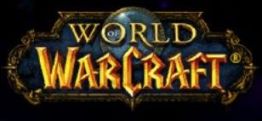
One of your children has been after you for months to let them buy and play World of Warcraft (or "WoW" as it's generally called). "All their friends are doing it." They're relentless. You managed to put it off for months, but hope against hope, the issue didn't just go away. Maybe you've even said "No!" but the question surfaces again, so you know they're serious. All you've heard are bad things about this game or online games like this one. I wrote this article to both allay some fears and simultaneously confirm others (along with giving some hints on how to control or diminish many of them). Does that sound odd? That's OK. This is a unique game in an interesting industry.
On the other hand, maybe it's you that's been hearing the buzz from friends and/or family and you're considering joining yourself. Perhaps it's both you and your children. WoW is one of the games that can be played - and played well - by several members of the same family, even those in different age groups. This article has been written for parents with children asking to play WoW, but most of the information here would be useful to any new player. If that's you, read on, but substitute "you" for "your child(ren)."
If you're the parent of such a child and you came here hoping to find the article you could point to and say, "See! This is why I won't let you play!" then you're about to be disappointed. If, on the other hand, you are the child whose parents have refused to let you play World of Warcraft, and you were hoping to point to this article and say, "Look! It's all good!" then you're going to be disappointed, too. The point of this article is to tell parents who don't play the game (and their children who aren't playing yet) what they and their children should expect and be aware of. There are both good and bad aspects to the game - much as there are in any worthwhile endeavor.
Disclaimer: Off and on, I have been an avid WoW player. I played for almost five years, but I'm not currently playing for reasons that I will get into during this article. Some of my information is undoubtedly going out of date, but the gist of my points should still be true. I did not play WoW with either of my two children nor did I watch them play WoW. They did play Everquest, Everquest 2 and Star Wars Galaxies before I started playing WoW. During my WoW playing years, they were both in college and simply didn't have the time to play. They knew it and I knew it. That's an important thing to be able to recognize. I played WoW alongside children and adults; their ages ranged from 12-13 years old to those in their late 60s.
Copyright Notice: While I took most of these screenshots myself, Blizzard would maintain that they are still the property of Blizzard. Who am I to disagree? Assume all shots of the game are copyrighted by Blizzard. World of Warcraft and Blizzard Entertainment are trademarks or registered trademarks of Blizzard Entertainment, Inc. in the U.S. and/or other countries. For screenshots taken from other sources, assume they are copyrighted by their respected sources.
World of Warcraft Is Much More Than a Game
If, as a parent, you can't understand why the World of Warcraft mantra seems to be repeated louder and longer than expected, let's start this way. WoW is not just another computer game. WoW is an industry. The number of subscribers peaked in excess of 12 million and as reported in this Gamasutra article, may have been in excess of 13 million. The numbers home come down from the peak and estimates are now in the 7 million range (Nov 2014). Compare this to the number of people that play fantasy football, which is estimated to be 33 million in 2014. If someone you know work mentions that they play fantasy football, it barely raises an eyebrow. If the same person mentions they play WoW, that admission is generally met with some surprise. It shouldn't be. Depending on what numbers you use for the math, at the height of WoW's popularity, any given person was about a third as likely to be playing WoW as they are to be playing fantasy football. When your child said all their friends are "playing it," quite likely many of them actually are.
My hope is that parents will read this article and make an informed decision about the conditions under which they will let their children play WoW (if any). My fear is that parents looking for an excuse to bar their children from the game will skip right to the bad and ugly parts and ignore the good. Shame on you if you are such a parent. You are doing your children a disservice by doing so.
I have the opposite fear as well. That is that parents will allow their children to start playing WoW without having any idea what that entails. After all, it's just another computer game, right? WoW has both good and bad aspects. My belief is that the good outweighs the bad, but that's no reason to make believe that the bad doesn't exist. The rest of this article will go into several aspects - both good and bad - of the game.
The Good
The GoodThe Good, ...
While World of Warcraft is more than just a game, it is still a game at heart. From a gaming point of view, let's first look at what there is for a parent to appreciate about the game.
Easy to Play
The first thing that I usually mention to an older (or the parent of a) potential player, is that WoW is not a first person shooter (FPS), although there are guns - for some classes of players. It's not just another I-kill-you,-you-kill-me or kill-everything-that-moves game. WoW is not a "twitch" driven game at all; that is, it doesn't matter (as much) if your reflexes are less than cat like. WoW is a role-playing game or RPG. That is, you choose an action for your character to perform (after having chosen a target if necessary) and the character acts it out on screen. That action can be hitting something with a club, throwing a lightning bolt, harvesting an herb or any one of hundreds of other actions. (Your character class, level and specialties determine which actions your character can perform. More about this later.)
Because of this, WoW can be played by those younger than would typically be successful at online games like Team Fortress 2 or the latest Call of Duty and just as well by those over the age of 40 whose reflexes may not be quite what they used to be. The oldest player that I regularly played with was in his 60's and retired. He was a dedicated, excellent player. Even so, WoW is not really an appropriate game for children under 12 or 13 to play without nearby adult supervision. There is simulated drinking and some sexual innuendo. The general text chat channel can sometimes be occupied by gamers with a potty mouth (or in this case, potty fingers). The game includes a language filter for chat windows, but it doesn't catch everything. It's nothing a child wouldn't see or hear in many music videos, but then, children under 12 or 13 probably shouldn't be watching those either.
Because of its easy-to-play nature, playing time can double as family time with WoW. Blizzard, the company that developed and owns the World of Warcraft franchise, has no problem with members of the same household playing together. Rather than just watching your children play, you can play the game with them. Playing simultaneously, however, requires multiple accounts and multiple computers which means doubling the monthly fee ($15 - or less) and the cost of the original software (which ranges from $20 to $70 with details to come below). I recommend initially that parents and children create their own characters and take turns on a single account until each players decides if the game is something they want to continue (or want their child to continue). Each account can have up to 50 characters.
Fun to Play
It doesn't matter how easy a game is to play if the game is boring. Tic-tac-toe and the old video game, Pong can be mastered in under an hour, and both get old just as quickly (although I recall Pong seeming like hot stuff when I was young). World of Warcraft is very, very fun. What's more is that even after playing for hours, it stays fun. Blizzard is renowned for creating games that play solidly, with wonderful little details, and are just undeniably fun. The gist of World of Warcraft is to have the player-controlled character complete quests in order to get gold, in-game reward items, and experience (which allows a character to increase in level where new abilities are gained at every level). There are some quests that can get tedious such as gather 10 of these or 20 of those, but the majority are quite fun. Some quests are simply stunning. There are quests that are parodies of Star Trek, the Beatles, old Nintendo games and more. There are also quests that literally change the player's view of the virtual world.
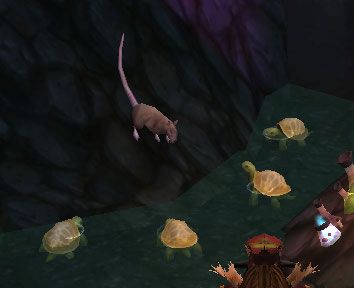
Taken at a leisurely pace, just completing quests and getting a character up to the highest level (85 at the time of this writing) could easily take months if not years. (I've also seen experienced players "level" an "alt" - a second [third or fourth] character in addition to their main character - from level 1 to 85 in 2-3 weeks.) In a talk given by Blizzard executives at the Austin Game Developers Conference (AGDC) in September, 2009, they mentioned that the original WoW (which will allow a character to advance to level 60) has over 2,600 quests. The Burning Crusade expansion (with new areas to explore, new character abilities and a top level of 70) added an additional 2,700 quests and the Wrath of the Lich King expansion (top level of 80) added 2,300 more. There is no way a typical player can or will do all the quests. With some exceptions for quests that are required for every player or required by a certain class of player, if a quest too tedious and boring, the player can drop it and choose another.
This is a good time to mention one thing that sets Blizzard apart from their competitors; Blizzard listens to its subscribers. If a number of players complain a particular quest is too tedious to complete - because the rate at which the necessary items can be obtained is too low, for example - Blizzard can and will increase the rate (or make other changes). They are also very good at investigating and fixing bugs encountered when doing a quest. More recently, Blizzard has taken steps to make leveling easier by dropping the amount of experience required at each level and by increasing the amount of experience gained for most quests. Some areas are slow to travel though without a mount such as a horse, a ram, etc. In order to remove the tedium of having to run long distances, the level at which the first mount can be purchased has been dropped from level 40 when WoW was first released to level 30 later on and is now level 20. The game has other means of transportation for getting around the world quickly, but those don't take one everywhere one needs to go. I mentioned in the intro that my kids played Everquest and Star Wars Galaxies, but I never did. The reason was that I saw how the game often frustrated them. It didn't look like fun to me. Eventually, it caused them to lose interest and quit. Blizzard has done a great job at avoiding those pitfalls and fixing problems as they arise.
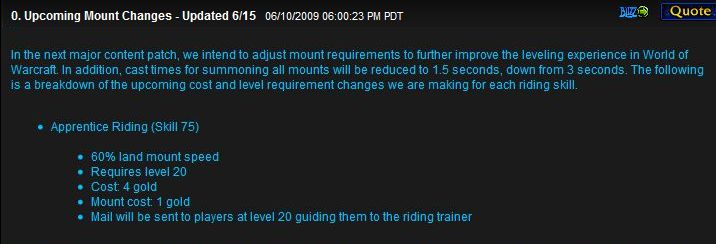
One example of how Blizzard listens to their subscribers in WoW
More Than Just Questing
More Than Just QuestingMore Than Just Questing
One characteristic of Massively Multiplayer Online Role Playing Games (MMORPGs) such as World of Warcraft is the constant community of others. You are never really playing alone. In WoW, players often login just to text chat with friends more or less the same way they use cell phone text messaging. The real fun starts at about level 17. There are special places within the virtual world that players can attempt in a group or party. The party size is 5 for the lower levels, but grows to 10 or even 25 players at the higher levels. A 10 or 25-member party is called a "raid group" or just "raid." The places that a party or raid attempts to conquer are called "dungeons" or "instances." "Instances" is a better term since only a few of the locations are actually dungeons, although most are inside something - a cave, a castle, a mine or a sunken temple for example. These instances have much more difficult enemies, which players at the appropriate level could not defeat alone; they must work together for the common cause. Players also have to defeat one or more bosses along the way that reward players better items than they would get from questing alone. (Click on any of the images with a bluish border to get a larger version.)
In addition to instances, there are also group quests - generally outdoors - that are easier to complete a party of two or three players at the appropriate level. If you have a child joining WoW to play with a few real-life friends, they may have a "built-in" party for doing instances and group quests, but often a group will need to pick up a random individual (with a particular specialty) to complete the group. I made a number of online friends this way and "ran" a number of instances with them later. Some of those instances became my favorite moments in the game. WoW has a way to keep a list of players as friends (as well as a list of players to ignore), which can be used later to tell when those players are logged in. Players can send a private text message to any other player in the game (called a "whisper") in order to ask if they'd like to try an instance run.
As you might expect, getting together a group of 25 people with the proper mixture of abilities to be successful in a larger, more complex instance doesn't happen randomly - at least, not well. Most players at some point will join a guild. A guild is just a group of players that play together regularly under the same guild banner (name). With a guild, there is a special guild text chat. The guild chat is active regardless of where the player is in WoW (unless the player chooses to shut it off or ignore it). Guild chat is a great way to ask questions about a quest that's proving illusive, to ask for or offer help, to organize raid groups for an instance or to just talk about the news of the day. The guild bank is a guild community storage area (found in the larger cities in the game) where members of the guild can place items they find or produce or get items they need. Every guild has one or more guild officers. They can determine who in the guild has what sort of access to which parts of the guild bank. Higher-level players can leave items that up-and-coming players will need for certain quests. It also becomes a storage area for items needed for raids and some rewards from instances.
Guilds are fairly self-policing. While WoW has tools for starting and maintaining a guild roster, the game does nothing to enforce or require a guild. The officers of a guild invite new (un-guilded) players to the guild. They can kick unruly players from a guild as well. A player is free to leave a guild at any time. However, players that wish to successfully advance in the 10 and 25-person instances really need to belong to a guild to do so. Guilds help provide consistency and promote the right mix of other players needed to complete an instance. Most instances require many attempts to work out a successful strategy to defeat the various "bosses." That strategy can only be successful if the players understand it and know each other's play style. A guild has to fairly reward the guild members in order to keep them happy. Players need to play up to their ability and treat guild members well in order to remain in good standing. Defeating a particularly troublesome boss for the first time with 9 or 24 other guild-mates is a particularly euphoric and rewarding experience on par with winning the "big game." The A-Team's Hannibal had it right when he said, "I love it when a plan comes together."
If your child isn't interested in playing in a group, they can play from level 1 to the maximum completely alone. I have done exactly that when I wanted to create an alternate character (called "alts") quickly. They won't be able to go into instances appropriate for their level. They could, if they wished just to see the content, go alone into an instance significantly under their level and generally do just fine. For example, they could go alone into a level 17-20 instance when they are level 40. There are some parts of some instances that require more than one player to advance though. Very few of the items they would receive while in such an instance would be of any use to them (except maybe to sell in the auction house). Such a player should understand that when they reach the top level (called the "level cap"), there won't be much left to do. They could complete outstanding requests or return to do quests they'd not done earlier (even if those quests are significantly under the player's level), do recurring daily quests, play in the battlegrounds and/or arena instances (although that's not done alone). There's really not much else. This isn't necessarily bad because as mentioned before, reaching this point could take months or years. After that, the player could try a new character class as different classes play quite differently. The same quests need to be approached differently by different classes that have different abilities. Also, most classes have special quests for only that class. If a player reaches the point where they feel they've done it all, they can choose to suspend their account. Their characters and all the character's items are placed in limbo. They are no longer able to play nor are they charged the monthly fee. When a new expansion is released later, that player can reactivate their account and start from where they left off.
Some players prefer the player versus player ("PvP") style of play of Call of Duty or Team Fortress 2. Others prefer player against computer-controlled characters, which is called "player versus environment" or "PvE." WoW supports both styles of play. World of Warcraft has two main "factions:" the Alliance and the Horde. As you would find out from the in-game lore, these two factions are sworn enemies. To support the two styles of play, there are two main types of servers: PvE and PvP. On PvE servers, players from opposing factions can only battle in the battlegrounds instances, certain "contested" areas of the world or when both explicitly decide to battle (almost anywhere). On PvP servers, any player can battle any opposing faction player (at any level) at any time with no warning in most areas of the world. Battlegrounds are special instances where a 10, 15 or 40 players from each faction (at or near the same level) battle each other. Some instances are won by conquering the other side's general. Others are capture-the-flag instances and in some, the players must control certain spots in the instances for the most time.
For those players that prefer a rated and laddered set of battles, WoW has an arena system, where two teams of a five players per team battle it out. Arena challenges are divided by "seasons," much like football or baseball. The teams have to be arranged and registered before their first arena match and more-or-less remain constant for the entire season. Based on a team's arena rating, they have access to buy special equipment - which is generally tailored to further PvP play.
Apart from the usual quests, Blizzard has a number of special events in WoW that are held every year. Many correspond to (but are not named the same as) popular holidays from various cultures such as Hallows End (Halloween) and Brewfest (Octoberfest). During these events, there are special quests that have rewards unique to that holiday (such as a special mount like a flying broom, the Headless Horseman's horse or brewfest RAM or a special pet.) Many of these rewards can be very helpful to players in other parts of the game. Some, such as the pet pumpkin, are purely whimsical. There is also a weekly fishing derby, the Stranglethorn Fishing Extravaganza. There are unique rewards from that as well. Very occasionally, Blizzard will also have one-time-only events. These often correspond to the imminent release of a new expansion pack and serve to bridge the lore from the existing world to the new content in the expansion. Even though they may happen only once, they are implemented with the same care that Blizzard shows throughout the game.
Unexpected Real-World Lessons
Unexpected Real-World LessonsUnexpected Real-World Lessons
If as a parent, you lament that the time your child will spend playing WoW is a waste of time, that's not going to be entirely true. Any game - golf, bowling, checkers or computer games - is just a form of entertainment like watching television. However, World of Warcraft does manage to sneak in some things that are reasonably educational. Interestingly, they are actually mostly fun.
Playing On a Team
If your child ends up joining a guild (as discussed before) and progresses to the later levels of the game, they will discover the importance of playing on a team, taking direction & criticism and paying attention. The higher-level encounters - especially the 25-man instances - require a lot of coordination and talent to win. There are instances that every member must survive and do their job in order to succeed. Every member of the group needs to know their primary role and what to do in contingencies. Every member has to start the raid with all the items they need for the session such as potions and (special) equipment. I played organized sports in high school, and I can attest that the need to practice and learn group coordination is no less important when playing WoW. There are no spectators in a raid group and nobody sits on the bench.
Economics
The first of the sneakily educational activities that new players are likely to encounter is the auction house. This is the WoW equivalent of Craig's List or eBay. There is an auction house is located in most major cities. There, players can buy and sell goods they created, harvested and found during questing or running instances. Some items that are auctioned will be used by other players directly (e.g., health potions or armor) or as a part of other things they make or need for quests (e.g., a gold bar or a truesilver rod).
Items are auctioned off using a couple of different auction formats: open-ended and those with a buy-out price. All auctions expire a set time after they are created, but the seller has a choice of a few different periods. The longer the item is listed, the higher the auction house listing fee. The auction house also gets a cut of the sales. Once the player puts an item up for auction, they are free to go off and do other things. If an item in the auction house sells, the seller is notified both by in-game mail (which has the winning amount attached) and in their chat window. If it does not sell, the item is returned to them in the mail. When a player bids on an item in the auction house, they may buy it outright (if the auction has a buyout price) or they can also bid less than the buyout price (and higher than the current bid) hoping to win. Potential buyers are also then free to go off and do other things. If the auction is near closing, however, they may wish to stay in the auction house in case a bidding war occurs. If a user wins an item or is outbid, they are notified by the in-game mail system. If they win, the item is also included in the mail. If they are outbid, their bid amount is returned to them in the mail.
The tools included with the game for using the auction house are good, but another nice feature World of Warcraft offers is an extendable user interface. That is, players can install add-ons (generally written by other players) that make actions they do easier or track those actions. Find one of the many add-ons for tracking the items you see at your local auction house. Several of these create a local database of the prices it sees at that moment. Over time, repeatedly allowing this add-on to scan the auction house will give the player a good idea of the maximum and minimum prices for the items that have been seen. This is one of the most downloaded and used add-ons in the game. There is also a website, WoWuction that is dedicated to tracking the prices of auctions for all the servers in the game. Everyone, once they get to level 20 or so, will need to deal with the auction house for some items. Because of Blizzard's way of making what could be tedious instead be fun and easy, players find this diversion at least a little entertaining.
It's very common to see complaints in the general and guild chat text about spot shortages of an item that has caused a drastic price increase or a glut of some items they are selling, which causes them to sell for much less than they typically do. WoW players, regardless of their age, will learn the finer points of supply and demand in action. Don't be surprised when your child tells you they need to get on for just 15 minutes to check or start an auction. There are certain times of the day and certain days of the week when items sell for more or less than other days, and players will learn when these times occur for the items they sell or seek. Buy low; sell high is alive and well in WoW.
Mathematics & Online Research
Starting at level 10 and continuing as they level, players are awarded one "talent" point per level. There are many more talents than there are points to put into them. Some talents are offensive like a new spell or attack. Some are defensive. Others are more passive to aid in offense or defense. Added to this, there is armor, weapons, shields (for some players), rings, necklaces and other items that can be used to boost a player's talents or reduce an opponent's effectiveness. Additionally, there are magical enhancements and some items have slots for magical gems that can further supplement a player's talents. Suffice it to say, there are dozens of ways any player can beef themselves up.
While it won't be necessary for the early levels, eventually every player begins to wonder if they are getting all they can out of their characters. Perhaps they've noticed another player of the same class doing noticeably more (or less) damage than they are (assuming they are a damage-dealing class) or the other players have a talent they didn't choose to put talent points in themselves. When this happens, the player usually turns to one of the many online websites dedicated to discussing their class and the game mechanics in general. One of my favorites, when I played, was the forums at Elitist Jerks (which seems to have since disappeared).
My (last) main character was a damage spell caster. At Elitist Jerks, I found discussions in the forums that get very spirited with both theoretical and empirical test results by players when they do X, Y and Z instead of Y, X and Z. The math can get pretty involved. I used to use a spreadsheet written for my specific character class that had pull-down menus and fill-in-the-blank boxes that compared various combinations of talents, equipment and spells to maximize my character's ability with alternatives and recommendations. Such spreadsheets are often well above the amateur-Excel-jockey level. However, it's since been replaced with the much more extensive SimulationCraft, which is a C++ program that simulates the damage done by individuals and the raid group as a whole. People take this game seriously because it is no mere game. Nobody thinks anything of an avid golfer spending a week researching a new putter or a fantasy football manager spending 5-6 hours a week computing player stats. The same thing holds true for dedicated WoW players. A player that's serious about making their character perform their best will do the research to see what they need to add or subtract in the way of attack (or defensive) abilities, equipment and play tactics. This type of research can be done to maximize every class, but what that means to each class can be very different.
There is no shortage of websites to aid the player in their research. Some sites, like the Armory, were created by Blizzard themselves. The armory is a searchable database of the players in the game and shows the equipment they have, the talent choices they have made, their achievements and so on. It's a good site for looking at what another player may be doing that seems to be giving them a little more oomph. Other sites, like Elitist Jerks, are run by WoW fans and players. One of the best of those is Wowhead, which is a database of all the items in the game (past and present) and includes all that item's capabilities. The search criteria for Wowhead is very extensive, so once a player determines what they need to add to bolster their character's statistics, they can find out what items with those attributes exist (if any) and how they can obtain them. One of my favorite sites for finding quests or hints about quests is Allakhazam. It helps for finding quests appropriate for a given level or in the area where a player is in or wants to go. It also has hints on where to find items needed for a quest.
Just to add more variables to the mix, every class has three specialties. For example, depending on how I placed my talent points, the class I played could be a healer, a physical attacker, or a (ranged) damage spell caster. At various times in the game, I played the physical attack specialty and the damage spell caster specialty. Every time a player changes specialties, they must pay with some in-game gold to do so. The cost increases each time but hits a maximum. Recently, Blizzard added features to WoW so that players can toggle between two specialties relatively painlessly and cheaply. Of course, each specialty has a different set of attributes (armor, weapons, enchantments, etc.) to achieve to maximize that specialty and requires different research. WoW allows up to ten characters per server and a total of 50 characters per account. If a player decides they picked the "wrong" class for them, is getting bored with their current class or just wants to try a new class, it's simple to start a new character. Blizzard changes some class abilities over time (especially when a new expansion is released) in an attempt to balance how that character plays with or against each other. Because of this, sometimes new research is required even if the player doesn't change characters.
Other sites exist that have strategy guides for leveling different classes, making money with certain professions and how-to guides for defeating instance bosses. Of course, there's more than one way to beat most bosses, so the guides are just a starting point. Every raid group will need to make adjustments to take into account their level of equipment, their play styles, and group composition. There are many YouTube videos on the topic of boss battles. When you have 12 million players or so, there's bound to be a lot of fan support. It's almost guaranteed that a WoW player will at some time use the Internet to research their character and/or how to advance in the game. Doing this type of research is good practice for researching that famous character for an English report, that obscure law for government class or which stocks to invest in.
... The Bad, ...
... The Bad, ...... The Bad, ...
There a lot of good things to say about World of Warcraft, but not everything is hugs and kittens. Now, let's first look at what there is for a parent to be apprehensive about in the game.
Virtual Time Sink
Like any non-trivial game, World of Warcraft takes time to play. How much time is really up to the player (or the player's parents as the case may be). There is no denying that WoW can become quite a time sink. It takes time to level, gather materials to sell or make into needed items, run instances, complete quests and do research. Some instances are quite short, taking only an hour or two. Others are very long. As an example of the extreme, there was one instance I did with a random group (called a "pick up group" or "PUG" - borrowing the same from basketball) that is usually done in three parts. That is, it's usually run three separate times. This particular group did very well on the first part and decided to run the whole thing in one sitting. I was sitting for a little over six hours. One of the major complaints players had about WoW was how long instances were taking, so in the last expansion, the new instances where constructed such that bosses that could be done in shorter times and individually over several days if necessary.
There are ways parents can control how much their child plays. Starting up WoW requires logging into a WoW account with a user name and password. Younger players don't need to know what that password is to play their characters even if they switch between them, so a parent can logon to WoW and turn it over to their child to continue. If the player logs off or communication drops and the player is logged off automatically by WoW, it can become tedious for the parent to have to go back to the computer and type in the password every time. It would not be a problem in my house as connection problems are rare with my Internet Service Provider, but that not the case for every household.
Another way to control game playing time is to use the parental controls provided by Blizzard for its games. (It used to be just for WoW, but now appears to cover all Blizzard games. A login may be required to see that page.) These are used to set the times that the game may be played by day of the week and hour of the day (in half hour increments). This schedule is given a separate password (and email address) from the account's password so even if your child knows the account password, they can't change the schedule. Unfortunately, this schedule is set for the entire account rather than individual characters, so if the parent would like to play after junior (or juniorette) has gone to bed (and it's outside the scheduled hours), the best approach is a separate account. One reason that the schedule is set on the account - not on the game installed on your computer - is so that junior/juniorette can't just go to a friend's house to "study" and play their character from there. Clever folks those Blizzard programmers. Additionally, the game has a command - /played - that can be typed into the chat text window to get the total number of days, hours and minutes played on that character. (The number of "days" is the number of 24 periods played - most likely not contiguously.) Parents can ask to see these numbers periodically to see if they are increasing unexpectedly.
Unfortunately, some quests are just plain tedious and time consuming. I found the newer the quest is (i.e., those that occur in later levels in expansion packs as opposed to the original ones in the original portion of the game), the less likely this was to be the case. Blizzard has reworked a lot of the older quests as well. If a player is trying to get 20 of something from some animal along with 15 other players that just happen to be doing the same quest at the same time, this can take quite a while. Time management comes into play here. If your child complains about a quest taking too long, encourage them to either drop it or come back to it later. WoW does keep track of the rate at which items are being collected in a certain area and dynamically changes the rate at which those items "spawn" (i.e., get created again). Even with this, if an item is being over-farmed at a given time, it may not be enough. There are just so many quests though that (you or) your child should always have others to do instead.
Mom! I Can't Quit Right Now!
Most parents have probably heard a similar lament from their child when they ask them to quit a game to go to bed, come to dinner or do their homework. In some games, it's a hollow complaint because they can stop and save anywhere without losing any progress or achievements. In World of Warcraft, unfortunately, that is not always the case. It is true that a player can log out of WoW at any time or place. (The game does have a short countdown if a player logs out when they are not in a "safe" area such as a town.) The world in WoW is always live and active even if your child's character isn't playing. If your child just managed to battle their way through a bevy of baddies to advance in a quest, they won't want to stop and log out at that point. If they do, everything they've just managed to defeat will likely be back when they log back in. (This is called "respawning" in WoW.) It's likely that they will re-enter the game standing on or near one of the game's computer-controlled characters (called "NPCs" for Non-Player Characters) who will immediately start attacking (as will any other nearby NPCs). That generally ends badly. No WoW player likes to have to repeat the effort to get back to where they were in the progression of a quest.
That last paragraph only looks at the problem from the standpoint of playing alone. It's worse if your child is with a group in an instance. It can sometimes take a long time to get a group formed, and if the instance is new to the group, it can take a while to make their way through. Nobody likes to have to quit in the middle of an instance, and other players don't appreciate it when another player quits before the end. If it happens often, your child may find it hard to get invited to a party because of their reputation of not seeing it through to the end.
Even with the above caveats, the facts in WoW are: a player can quit anywhere and anytime in the game if they have to. Every player can "hearth" (teleport) directly from any place inside WoW to a safe spot at any time (although there is a time limit to how often they can do that - and a countdown until the limit ends). Before allowing your child to play WoW, set the ground rules for questing and "raiding" in a party or group. Starting a quest with less than a half hour or a raid with less than an hour before their time ends should be discouraged. Along with the parental controls, children will learn how to cope. If they've got only 20 minutes left, they can log out early (Gasp!), gather some extra raw materials for whatever profession they've chosen, browse the auction house or (at the higher levels) do one of the short, repeatable daily quests to get in-game gold. The game does not lend itself to having a player quit at a moment's notice, but it can be managed fairly well.
Pests
PestsPests
I mentioned above that one of the positive things about WoW is the ever-present community. As a parent of a child, you might be apprehensive about the other people your child will meet in the game. From my experience, the vast majority of other players are just out to have fun, too. The chat text is usually fairly lighthearted and fun. Unfortunately, as in any public place there are those "less-than-desirable" characters. WoW does have a language filter option so that certain words in the text chat windows are bleeped out with "#!^*@!%&@" type substitutions. A player can add any other player to their ignore list so that anything that player types in a chat window isn't seen at all. Individuals that repeatedly cause stress to other players by their actions or language can be quickly reported using the in-game reporting system. These are investigated by the WoW "game masters" or "GMs" who are Blizzard employees that monitor the game and can perform a number of actions in the game. Players found to be a nuisance can be warned and may find themselves teleported to a very inconvenient place. If they persist, such players are usually banned from the game. These bans start with a few hours or days for a first offense, but quickly escalate to the permanent ban on the entire account upon repeat offenses. Blizzard makes an amazing amount of money with this game and they'd like to keep it that way. Players that cause strife don't last long. Blizzard has both the motivation and the resources to make the game safe and fun for everyone that plays it.
Pests could return under a new account, but they'd need to buy the software again since the key on their old version would have been invalidated with their account. I used to wonder why Blizzard still charges for the boxed game. I thought to myself that surely, they earn more from the monthly fees than they do from the box sales (considering the $20 initial software includes the first month of play, which is worth $15). So why hasn't Blizzard gone to a pure online download system for their software (as they do for the game's patches) or just offer the DVDs for free at the checkouts of grocery stores like AOL CDs used to be found? It dawned on me that charging for the software makes it expensive to be a recurrent pest. The minimum cost would be a new copy of the World of Warcraft basic game for $20. To get to the highest areas, said pest would need to add $50 for the Warlords of Draenor expansion. Making a nuisance of oneself and getting one's account banned gets expensive at $20 (or $70) a shot.
Undesirable Game Elements
Wow is pretty tame as computer games go. There is no swearing from any of the game's computer-controlled characters (called "NPCs" for "Non-Player Characters"). There is no nudity in the game either. Characters can remove their clothing down to race and sex-appropriate underwear. So while your child might see provocative night elves dancing in their skivvies, that's about the extent of it. The dances are modeled after real humans such as Britney Spears and Michael Jackson so they are realistic and can be sensual. You used to be able to see some examples alongside their human counterparts in YouTube videos here.
Some guilds on some servers advertise themselves as lesbian, gay, bisexual and transgender (LGBT) friendly guilds. Depending on your child's age, you may feel more comfortable steering your child away from such servers or at least those guilds. That said, LGBT issues are a fact of life, and your children will have to deal with them sometime. Across an Internet connection in the text of a chat window is about as distanced as it gets. As a parent, you should ask for the details of any guild your child may wish to join. Almost all guilds of any size and standing have their own website (independent of anything Blizzard produces). Ask your child to show it to you if you're not familiar with the guild yourself. If they don't have one, they may be very small (made up of friends of your child's, for example) or very new, but otherwise I'd be suspicious of a guild with no web site. World of Warcraft has a forum area of their web site for every server. Those can be searched for the name of the guild and/or the names of the officers of the guild to see what sort of postings they've had in the past. That's a good way to get a feel for what a guild's reputation on the server is.
Cha .. Cha .. Cha .. Changes
Cha .. Cha .. Cha .. ChangesCha .. Cha .. Cha .. Changes
Every Tuesday in WoW is known as "Patch Tuesday." Blizzard has the option of shutting down the servers - all of them in a region such as the US or Europe - between 12:00 am and 5 am (PST in the US) every Tuesday for maintenance and upgrades. They don't always observe the downtime, and it is often shorter than the maximum time. (However, for major new releases such as a new expansion, the downtime can be extended to 24 hours and has gone as high as 72 hours at least once in the past.) A fact mentioned in the talk given by Blizzard executives at the Austin Game Developers Conference (AGDC), most of WoW's 180,000 documented bugs have been fixed. Rolling out those fixes generally requires the servers to be shutdown, the fixes installed and the servers restarted. The fixes may require the software on your computer to be updated as well. Sometimes those downloads are small; sometimes they are hundreds of megabytes. In the same talk, Blizzard mentioned that at that time, 4.7 Petabytes of data had been downloaded. If you happen to live where there is measured Internet or a cap on the amount of data you can download, this can be a real issue. This isn't an issue for most of the US Internet users. (Click on the thumbnail below to get a sample of some recent bug fixes.)
Bugs aren't the only things changed. Occasionally, Blizzard does "fix" classes to bring them up (or down) to par with each other. This has the effect of making some classes less effective than they were and others more effective. The reduction of class' abilities is called "nerfing" after the popular Nerf brand of foam toys (that hurt less than the real thing). An increase in abilities is called "buffing." Most of this balance is to make all members of a group in a battlegrounds or a raid instance have a reasonable effect on a group. It's a very delicate balance with a lot of interweaving of abilities to make an effective group. The good news is that if your child picks a class that they don't think is performing as well as other classes with similar duties/roles, they might get a "buff." The bad news is that they are just as likely to get a "nerf." Even more likely is that occasionally Blizzard changes the game mechanics in such a way that certain attributes that used to be important to a particular class for a particular role may be combined or switched to another attribute. A lot of the research I mentioned above has to do with maximizing the proper attributes for a given class. Sometimes it takes considerable effort to do so. It can be disheartening for a seemingly arbitrary change to make that work a waste of time. When and if this happens to you or your child, it can be a good lesson about life, but a player has an option of putting up with the change, switching to a new specialty with that character or switching to an entirely new character.
Drama
The higher-level instances can really only be defeated with a team of 10 or 25 players (depending on the instance) that are playing in concert. Because of real life schedules and commitments, a guild can't have just 25 members for 25-person raids. Having 25 individuals with the right mix of abilities on hand at every raid time translates into a need for something on the order of 40-50 members or more. Any time that many personalities are brought together, there's going to be some clashes. This is commonly referred to as "guild drama" and those that cause repeatedly cause such strife are called "drama queens." Generally, it's not too serious, but I've witnessed the breakup of several guilds as a result of drama.
WoW is a game at its core, but its players take it very seriously. Almost all guild drama starts with someone feeling they have been unfairly "robbed" of some item that comes from defeating some character in some instance. (Getting an item from a defeated character is known as "looting a drop from a mob" where a "mob" is any mobile character controlled by the computer.) These are usually items dropped by one of the instance's "bosses." We've vaguely referred to bosses before, but the definition of a boss is a uniquely-named character that appears only one place in the game and requires a combined effort to kill.) Before you join or your child joins any guild, find out how the guild does "loot distribution" and raid (instance) invitations. There are many ways of distributing the spoils of war, but any guild worth their weight will have a very well documented and implemented method of doing so. One term you will hear is DKP, which is short for "Dragon Kill Points." Most loot reward systems involve some method of earning DKP for raiding with the group and some way to spend it on items that come from defeating enemies. I've seen some mechanisms that are fairly simple and other that rival rocket science. The most important thing is that the reward system be established and rigorously followed. (Click on the link to see an example roster with DKP as taken from the demo at WebDKP.)
Is That It?
Is That It?Is That It?
One thing that Blizzard would probably refute is that there is an end to World of Warcraft. Many players would, too, and they are partially right. However, there is an end to performing quests - at least ones that are still beneficial to your character. There are quests that can be repeated daily, but those are only interesting for a while. Generally, one only does them to earn gold to buy items needed for raiding. If your child isn't interested in raiding, the game is going to wind down pretty quickly once the top level is reached. There may be a number of quests they skipped earlier that they can go back and do, but if the rewards won't be useful for them anymore; they are just tourists. If the game is played casually, it could take months or years to reach this point. While there is no discrete end to the game, there is a practical one for players not interested in raiding even if it takes a while to get there.
Even if your child is dying to get to the "end game" content and can't wait to raid in a group, there is an end to that as well. There are only so many instances. They can be repeated on a regular basis (as the instances "reset" every so many days on a fixed schedule), but even so, eventually the group gets equipped to the point where certain instances are no longer a challenge. (This is called having the instance on "farm.") It's possible to get to the last boss in the last instance and simply have nothing left to do. Very, very, very few guilds or players reach this point. Most of the time, new content comes out and the guild abandons the previous instances they were doing in favor of the new instances at higher levels and with better loot. Add to that, the fact that the time commitment to complete end-game instances is much higher than for casual questing. It's more likely your child will get bored or burnt out on playing WoW and find something else to do.
If your child finds themselves at the end, they have a few choices. They can try a new character class (perhaps on an entirely new server), a new race and even the opposite faction. Each faction has some number of quests that only that faction gets to do. Every class and specialty within that class plays differently and many have class-specific quests. They will still reach the top level - at an ever-increasing rate since they are experienced in playing the game - but there are a lot of classes and races on both factions. If all else fails, they can suspend their account and wait for new content.
To the left: My level 60 paladin at the top of his game .. in 2006.
... And The Ugly
... And The Ugly... And The Ugly
And to wrap up this line, let's first look at some aspects the game that are best avoided altogether.
Gold Farmers & Power Levelers
Any group with millions of members or more will be shadowed by another group trying to figure out how they can make money off of the first group. It's inevitable. In WoW, the in-game currency is gold. A number of enterprising individuals realized that they could use cheap foreign labor and/or automated scriptable characters (called "bots," which is short for "robots") to play WoW constantly and explicitly for the sake of getting gold or collecting items to sell on the auction house for gold. They then sell the in-game gold for real money. Such players are disparagingly called "gold farmers." Many of these accounts originate from China or other Asian countries, so the terms "Chinese gold farmer" or "Asian gold farmer" are synonymous with "gold farmer." Try a Google search for the term World of Warcraft gold and look at the results to see the extent of the problem. When in the game, there are sometimes characters with obviously randomly generated names yelling the name of their gold-selling web site in the general and trade chats of major cities as a way of advertising. These characters are permanently banned quickly, but since they are using trial and start up accounts in the first place, they often come back. The problem is bad enough that Blizzard has made their opinion known on the official WoW site.
The problem with gold farming might not be immediately apparent. When I first started, I knew I personally would never pay real money for in-game gold. If others didn't have the time or knowhow to get their own gold and instead chose to buy it, so what? They didn't hurt me, and I learned to ignore the gold farmers. However, there are problems on two fronts: the first is the way the gold is farmed and the second is the effect it has on the game itself. Let's start with the second. In any economy - even a virtual one - any time the money supply is greater than it should be, inflation starts to occur. Gold farmers generate gold "from thin air" and then sell it to customers who pump it into their local server's economy. Over time, this causes inflation, which in turn causes it hard to get started as a new player with little gold and a poor ability to generate it (unless of course they too buy gold). Inflation caused by gold farmers does affect my (and others) ability to play the game.
By far, the worst aspect of gold farming is how the gold-selling companies get their gold. Typically, they employ underpaid and often underage workers for 10-12 hour shifts. While the working conditions are better than those found in the unnamed-famous-sportswear shoe company, that's only because the dozens of computers crammed into the one room requires decent cooling. To understand the seedier side of gold farming, read this article at the New York Times and this site dedicated to documenting the Chinese gold farming industry. Another method of farming gold is to use scripted or automated characters or "bots," which is short for robots. Often, these bots use hacks or exploits to do their work, which has occasionally caused servers to become unstable and crash or require unscheduled restarts.
Blizzard actively investigates and bans the accounts of those who are running human-controlled or scripted characters for the purposes of farming gold. The number of accounts banned for farming was in the thousands when I was playing. Interestingly, the longer I played the less of a problem it seemed to be. Pursuing the gold farmers continues as does the problem of players buying gold, but Blizzard also attacked the problem from the other end. High-end players that are in guilds actively doing end game content used to find it hard to get enough time to earn gold for items needed for raiding (such as potions) and repairs to their equipment. Gold was easier to buy than farm, so they bought gold. To alleviate this problem, Blizzard added fairly short, daily quests that make it easy to generate a reasonable amount of gold that can be used for such things as repairing equipment and buying supplies for raiding. They also increased the amount of gold awarded from finishing quests. Interestingly, Blizzard has to be cautious on how easy and how much gold can be made this way lest they create their own inflation problem.
Other than gold farming, another "service" players can hire is one where they pay to have someone else play their character to advance it to the highest level (or at least to a fairly high level). This is called "power leveling." It is similar to gold farming in that the actual person doing the leveling is an underpaid person working long hours. This service was very popular among players starting a second, third, etc. character. Some of these players didn't want to repeat the lower-level quests with their new character. There are also part-time services for those just wanting have their character continue to level when they aren't playing it themselves. Early leveling service entrepreneurs realized they could combine their gold farming and characters-leveling services by using the characters they were power leveling to do gold farming. At the time of this writing, the cost of having a character power-leveled from 1 to 90 in WoW cost from $100 for just reaching the level to $500 for reaching the top level with most or all of the best gear and abilities for that class. Recently, WoW has offered their version of power leveling called Level 100 Character Boost for $60 per character, which as the name implies boosts a character to level 90 (and includes a reasonable set of gear for the level). The World of Warcraft: Legion expansion includes one Character Boost for free. The player must still get from level 100 to level 110.
For players that just want to get a character quickly without any effort, it is also possible just to "buy" a character outright. In this case, the characters have been leveled to the highest level and depending on what the buyer is willing to pay, already have part or even all of the top-level armor and weapons in the game. Ebay used to allow individual account holders to sell their WoW and other MMO accounts in their auctions. However, Blizzard and other game makers threatened to pursue legal action causing Ebay to ban the sale of all game accounts and items in early 2007. There are still sites, however, that buy and sell characters for most of the top MMO games including WoW. At the time of this writing, the cost for a level 90 WoW character with a most or all of the highest-level armor set and other top-level items ranged from $800 to $1100.
Other than the questionable conditions under which these characters are obtained, the main problem with players who purchase their characters is that they play them very badly. "You bought your character, didn't you?" was a popular jeer used on any player that played their class poorly when in a group. I occasionally found myself in an instance in a pick-up group ("PUG") where that was the only reasonable explanation for how poorly some players played. It was either that or the player's password was found and used by their eight-year-old sibling. That or a poorly-trained monkee. Any player that started and leveled a character from level one to the top level on their own would have had to learn how to play it better than what I saw just to reach the top level.
Hackers
HackersHackers
Another unfortunate truth is that because in-game gold and some items have actual worth outside the game, stealing account passwords and hijacking accounts is a real concern. A number of recent keyloggers (Trojan horse programs that monitor and record keystrokes looking for account numbers/names and passwords) have been aimed specifically at WoW. A number of players have logged on to find all their gold missing and their items sold to a vendor and the gold from that gone as well - having been mailed to another account, which they have no way to track. It is the WoW equivalent of a mugging. One popular way to get such a Trojan horse/virus delivered to a WoW player is to embed it in a modified version of one or more of the popular game add-ons. As with anything downloaded from the Internet, players need to download add-on files only from well-known sites. Blizzard has stated that account hacking has become more popular than gold farming as the way to obtain gold for selling.
One good way to combat account hijacking is to buy and use a Blizzard Authenticator, which is a little device that displays a random six-digit code that must be entered after the password in order to log into the account. The code changes about every 30 seconds, so it would be useless for a key logger to record it. The Blizzard Authenticator is available for the cost of $6.50 from the Blizzard store. Blizzard doesn't charge shipping for the authenticators, and I would guess they sell them at a loss. However, these are a very effective way to safeguard an account, and at that price, there's no excuse not to buy one. Additionally, it gives parents another way to control access to the WoW account. Even if your child figures out your password (because it's the same one you used to lock them out of adult content on your cable channels) they still have to physically have the authenticator in front of them.
If you or your child has a cell phone or iPod, Blizzard also has several versions of the Blizzard Mobile Authenticator (for iOS and Android devices). It's an application that functions like the Keychain Authenticator. It's a free download in the Apple or Google app store for your device. That gives you even less reason to not secure your account.
Addiction (or Time Sink, Take Two)
There have been a number of stories in the news about video game addiction. Since WoW has the largest number of players, it's natural that stories of addiction to playing WoW are big news. That's not to say such attention is entirely unwarranted. There have been apparently true stories of an infant in Korea that died of suffocation because it was left alone while both parents went to an Internet café to play a few hours of World of Warcraft. In another story, a girl in China died due to exhaustion after playing the game for several days straight. Another story tells of one player stabbing another player to death because the other player "stole" an in-game item. These stories can still be found online, but the dates of most of them are in 2005 - not long after the game was released. I chalk much of this up to media sensationalism at the time. The game's been out for many years now, and it's lost the media's interest. We don't see stories about the guy that lost his job because of getting caught spending a couple hours a day updating his fantasy football stats on company time, but just Google the term "fantasy football addiction" and you'll see both satirical and real stories. Such stories are just not new and noteworthy.
It is true that for the players doing end-game raid instances, World of Warcraft can take large chunks of time. Organizing a 25-person group, making sure everyone is there on time, has the items they need, and knows their tasks and so forth can be a bit of a logistical nightmare. Once inside the instance, failing at one boss can mean a lot of having to redo earlier work. Learning the strategy of the fights that works for a particular guild may take many attempts stretching over days or weeks. The time required to do end-game instances is one of the major complaints made by end-game players. Blizzard doesn't have a complete answer to this problem yet.
Blizzard has made a number of changes to the game to reduce the time commitment for these players specifically and players inside instances in general. (Time commitment isn't a problem for other parts of the game.) The end-game raid instances used to require 40-person groups - period. That's been dropped to 25 and 10-person groups, which results in less cat herding and allows for smaller guild sizes in general. A more recent change is that players anywhere in the virtual world can be "summoned" directly into instances to the spot where the party is. This aids in substituting a player that has to logout or is having computer or Internet problems. The design of the newer end-game instances allows them to be done in smaller chunks of time with breaks between major fights where the instance can be paused for the day (or night). Even with these changes, end-game raiding still takes a larger time commitment than many parents would like. You and your child will need to address this issue if and when they get to the point of running end-game content.
I don't want to belabor this topic longer than necessary. Any activity can become an addiction to those so inclined. Eating, smoking and even exercise can become addictive, so why would video games be exempt? As a parent, the trick will be allowing your child to play enough WoW so that they don't feel they are unjustly restricted while limiting play time so that it doesn't preclude other activities such as family time, school work or sleep. That's not unlike what parents are expected to do for any of the activities that their children really enjoy. As mentioned, WoW provides some tools to help enforce limiting play time, but ultimately, parents really just have to do their job.
The Economics of WoW
The Economics of WoWThe Economics of WoW
This section is completely optional. While I was doing the research when getting ready to write this, I came to the realization of just how big of a monetary vehicle World of Warcraft is. I found it surprising, but it's not pertinent to whether or not to let your child play this game. It does illustrate that Blizzard has every reason to make WoW an enjoyable experience for all the players it can draw in, and as a parent, you can take some comfort in that.
I mentioned the sheer number of people playing WoW to give a sense of the magnitude the game has on the real world. Besides the numbers that play, it's astonishing the amount of money generated by this game. This section was written when WoW was at it's peak of 12-13 million subscribers. It's now estimated to be around 7 million, so take about 60% of the numbers below. I left the original because that was the most impactful.
Not all of the 12-13 million subscribers pay $15/month. China subscribers, for example, pay with either a prepaid game card or something like prepaid gaming points at a rate of about 6 cents/hour. The players in China also don't have to buy the boxed copy of the game initially, which is a savings of $70 over US players who must buy the original game and expansion(s). The recently released Russian version of WoW costs 359 rubles/month according to an article from gamertell.com, which is about $12/month. If we assume the active player base at 12 million and that the percentage of players playing on US servers (who may or may not actually be in the US, but are paying US prices) is about 75% of the total and the other 25% pay 2/3 of what US players pay monthly (just a wild guess), we have (12m x .75 x $15/month) + (12m + .25 + (2/3 x 15/month)) = 9,000,000 x $15/month + 3,000,000 x $10/month = $165,000,000/month or $1,980,000,000/year. That's right. The game could well be making in the neighborhood of 2 billion dollars a year before expenses. It's not just a game; it's an industry.
There are some serious expenses to be sure. Blizzard, the owner and developer of the WoW franchise, is very serious about their commitment to WoW. This wow.com article covers a talk given by Frank Pearce and J. Allen Brack at the Austin Game Developers Conference (AGDC) in September 2009. Pearce is the Executive Vice President of Blizzard, and Brack is the Production Director. They mention that there are around 4,600 full time employees charged with making World of Warcraft run and for expanding the game. This number includes everything from game masters who handle player problems on a day-to-day basis to billing to game designers who write the new game content and mechanics as well as maintaining the existing 5.5 million lines of code.
Add to the expense, the hardware required to support 12+ million subscribers. Each player logs in to one of the World of Warcraft servers. (They may even have different characters on different servers.) Each server or "realm" as it is called in WoW is housed in one of Blizzard's (or Blizzard's partner's) data centers around the world. The wowwiki.com Realms List is an unofficial list of existing realms and the data centers they are housed in. While it's not official, I've found everything to be quite accurate at least for the US Realm Server List by Datacenter. I've tried to satisfy my curiosity about just what kind of hardware makes up a server, but I've never found the particulars. The closest thing I've found to date is a short list of numbers also from the above AGDC keynote. In total, there are 20,000 computer systems, 13,250 server blades, 75,000 CPU cores, 112 TB of RAM and 1.3 petabytes of storage. I'm certain that none of those computer systems are low-cost. In addition to the servers, every one of the 4600 employees needs at least one desktop PC with one or more monitors for their day-to-day work. With that number of PCs, there needs to be a group that manages the maintenance of them.
I find the reality, the substance, the extent of effort it takes to bring WoW to the community a staggering thing. The whole point of this section is just to impress upon you that World of Warcraft is more than just a game played by a lot of people. It has true economic weight that needs to be understood. This could be viewed as either a good or a bad thing. It's good because Blizzard will do all they can to insure WoW continues to provide the income they have come to depend on. Any factors that would upset that flow - people trying to scam or steal accounts (hackers) or make real money from the game (gold farmers) - are pursued very vigorously.
Getting Started
Getting StartedGetting Started
If you decide that you're going to allow your child to venture forth into the World of Warcraft, the next step is to see if you have what is needed. It's probably obvious that they'll need a computer, an Internet connection, and the WoW software. There are also a few things not mentioned in the boxed product that your child will/may need at some point. This section will delve into all the items I found I used and that I know others used.
Hardware Requirements
Blizzard did very well in this area. They want as many people to be able to play World of Warcraft as possible so the computer hardware requirements are modest by current standards. If (your or) your child's computer is able to play most recent game titles fairly well then it's likely that it will play WoW just as well. The official hardware requirements from Blizzard are available on their site. For the most part, what they list there is honestly sufficient to play the game with low to moderate graphics options selected. If you have any doubts about the ability of the computer in question to be able to play World of Warcraft, browse to the Can You Run It website from that machine. Let the site examine the computer to see if it has what it takes. Start typing "World of Warcraft" into the text box and choose whatever the latest expansion pack's name is after that. The site offers several ways to check your system and match it against the requirements. The method I chose will temporarily install a small application that scans the machine to see if it meets the minimum and recommended requirements.
Most people play WoW on desktop computers. Laptops can be used to play WoW, but they should have a discrete graphics chip (aka GPU) rather than an integrated graphics chip, which most do not have. An easy way to tell is that if the laptop mentions having with dedicated (or dedicated and shared) graphics memory, it almost certainly has a discrete graphics chip; if it mentions only shared memory for graphics, it is almost certainly using an integrated graphics chip. Some laptops are designed for playing games and will do fine with WoW. I have played WoW on a fairly old, low-end laptop (with 2GB of RAM using Windows XP and with a dedicated graphics chip). With the graphics settings all set to low, the game played decently and still looked pretty good. In general, it's best to stick with a desktop machine.
After reading the official requirements, I would recommend doubling the suggested amount of RAM. When playing WoW, it's very handy to have other programs open like Internet Explorer or Firefox. That way, if one gets stuck or needs to look up an item, hitting ALT-Tab switches between the game and the browser. If you have only the recommended amount of memory, there may not be room for anything else once the game is loaded. One number on there that might be a bit low is the one for the amount of disk space needed, which Blizzard lists as 35 GB. That's a lot of disk space, but even so, the reality grows too much worse than that. However, as I mentioned above, Blizzard patches the game quite often. Some of those patches are hundreds of megabytes. On my computer, the folder into which WoW was installed had grown to over 40GB of space. That was a couple years ago, now, but they were advertising the requirement at that time as 25 GB. For newer computers with 500GB drives and up, this isn't a problem, but might be on an older PC with a smaller drive or a newer PC with a smallish SSD.
Blizzard offers physical Blizzard Authenticators in the US, Canada, Australia, New Zealand and Latin America as one way to add a second level of security to your account. For $6.50, it's a steal. Blizzard also offers a free mobile authenticator application for Apple iOS and Android devices. Both add a good amount of protection to the account for very little or no money. This is the proverbial "no-brainer;" get one of them. It may take several weeks for the Blizzard Authenticator to arrive, but that should not be an issue. Account hackers aren't interested in the 1 gold, 57 silver that you or your child's level 12 character has or in the one or two rare items of armor they are wearing. Your child is relatively safe until they reach the higher levels where they have a large amount of gold and valuable items.
When your child reaches the point where they are doing instances (or right away if they are joining WoW with a group of friends), they will want to get a headset with a microphone. This is especially true in the higher levels or when and if they join a guild. The Ventrilo software, discussed below, is used to allow players to talk to each other over the Internet. It's much more efficient than typing messages into the party chat window (and doesn't require that the player stop playing in order to type messages). I do recommend getting a decent quality headset. A $10 headset sounds like a $10 headset to the other players who may not even be able to understand what your child is saying. Expect to pay more like $20-$50. Make sure to get a stereo, not mono (single-ear) headset.
High-speed Internet Connection
This is one unyielding truism about World of Warcraft (and all online games, really): dial-up connections need not apply. Satellite Internet connections need not apply either because their inherent latency (the time for data to travel up to the satellite and back down to the earth to a hardwired receiver) is just too high for gaming. Wireless broadband (actual wide-area coverage wireless broadband as opposed to the wireless Internet inside a house or building) may work depending on the contention and speed in your local area. Just having a high-speed Internet connection alone is not sufficient. It has to be a continuous and reliable connection as well.
A case in point: one of my guild members had cable Internet service with an advertised speed of 8+Mbps incoming/down to his house and 512Kbps outgoing/up from his house. Theoretically, that is more than enough bandwidth for the game. However, every few hours - almost like clockwork - his connection would drop for about 20 seconds, which had the effect of logging him out of the game. It was extremely annoying to him and everyone grouped with him in the game. As it turned out (with much investigating on his part), the culprit was the way the dynamic IP service was implemented by the cable company. With dynamic IP service, which is the most common type of Internet service offered to residences, the cable company assigns an IP address to their cable modem when it first connects and periodically thereafter. The IP address is how the cable modem (and through the modem, his computer) is located on the Internet. He discovered that this particular cable company assigned new IPs to the modem every three hours. Most services only change the IP addresses every one to three days.
The company's explanation for this was that they did so to combat residential users from offering game and file sharing servers. Since his IP address actually changed, his connections to WoW were dropped. Pleading with the cable company got him nowhere. His solution was to add DSL service - at a much slower speed of 768Kbps/384Kbps incoming/outgoing - with the local phone company for about $20/month. From that point forward, he rarely had interruptions even though the service was much slower. The DSL connection still used dynamic IP service, but the IP address renewal period was much longer and when the IP address was renewed, his DSL provider generally assigned him the same IP address for weeks at a time. He kept the cable Internet for the rest of the house but used the DSL connection exclusively for playing WoW. Suffice it to say, if you have a high-speed connection, but it's not reliable or bogs down at particular times of the day, it may not be good enough for an enjoying online game-playing experience. If you don't even have a high-speed Internet connection: cable, DSL, FiOS or otherwise, playing WoW is not an option.
Software
SoftwareSoftware
World of Warcraft can be purchased either as a boxed copy or digital download. The game and expansion packs can be purchased from the Blizzard store, Amazon, Wal-Mart, Best Buy and just about any other place that sells PC game software. The table below summarizes the purchasing options. The links in the table below are to the Blizzard store, but they are not always the cheapest.
Version |
Description |
Cost (USD) |
|---|---|---|
| World of Warcraft | Includes the original World of Warcraft and all the expansion packs up to and including the Warlords of Draenor expansion pack, as well as the first month of play time. The physical boxed copy includes a beginner's guide from BradyGames. A PDF version (for those that buy the digital download) can be downloaded from here. Create the hero you want to be from one of 13 player races and 10 different classes. The level cap is 100 (out of 110). | $20 |
| World of Warcraft: Legion | The latest expansion pack that introduces a new world and zones. Level cap raised to 110. | $50 |
Total |
|
$70 |
The last time I played a character, Blizzard had made the initial download and the game free to play for the first 20 levels. That is enough to decide if there's any interest in going further, but lots of good stuff happens at level 20. Most that make it that far will go on from there, so at the very least, the game is going to cost $20. There is no advantage to buying the expansion(s) right from the start.
I prefer digital downloads to boxed copies anymore. The nice thing is if you ever have to reinstall WoW and have lost or damaged your DVDs (if you ever had any), the entire game can be installed from online downloads (assuming you have a fast Internet connection). A word of caution about the installation process itself: it takes at least an hour to install WoW plus the expansion(s). The base game is first installed like any other game. Next, the game downloads any patches and updates released since the version installed was created. A physical copy can get way behind in the number of patches needed. These can take quite a while and require more than one download. If the expansions are purchased, they must also be installed. I have spent as long as three hours installing everything from DVD.
One or two pieces of free software are needed in order to talk with other players over the Internet using a headset. These are Ventrilo and TeamSpeak. Most guilds will have their own Ventrilo or TeamSpeak server, but sometimes you may run a combined guild event or with a pick-up group using the other type of server. Since both are free, it makes sense to have both installed. Ventrilo seems to be the more popular of the two.
WoW add-ons are programs - usually made by a third party, but not always - that are installed into WoW to add some sort of functionality the game didn't provide originally. I already mentioned Auctioneer earlier in this article, but there are thousands of others. Some are specific to a certain class such as Hunter or Mage. Others are specific to a certain specialty such as healing or a profession such as herbalism. Still others help during group combat and with managing a raid group. I used about a dozen such add-ons during my time playing WoW. Although there's no need for them for a beginning player, they quickly become very helpful. I don't recall ever seeing an add-on that requires any sort of payment, but I recall a few that allow for donations. In order to avoid viruses and Trojan horses hidden in add-ons, it's important to download them from a known site. A good site to start with is Curse Gaming. I downloaded more than ¾ of the add-ons I used from there.
Monthly Cost
This is the part where your children tell you how much they love you. Assuming your children want to go beyond level 20, World of Warcraft costs $15/month (in the US) on a month-to-month basis. There are lower monthly terms for paying for 3 or 6 months at a time, but they are not refunded if the account is closed (by you or by Blizzard). You will need to either use Visa, MasterCard, Discover, American Express or PayPal to sign up for an account. Thereafter, the account can be paid with any of the above or with a World of Warcraft Prepaid Game Card (after canceling the other payment method manually). The prepaid game cards are $30 for a 60-day subscription. Paying via a checking account is only possible if using a PayPal account that is tied to a checking account. Additionally, in some states, state tax is charged.
Apart from the software and monthly fee, there shouldn't be any other costs required for playing the game. However, Blizzard has made a number of "services" available for a one-time fee. For example, characters can be transferred from one server to another for $25 (USD) per character. The name of a character can be changed for $10. A character's race (e.g., Dwarf, Gnome) or faction (Alliance or Horde) can be changed for $25 and $30, respectively. As these can add up (especially if moving 3 or 4 characters from one faction or server to another), you should encourage your child to take care when they start their characters. Visit Blizzard's support site and click on Character Services for a list of the services available.
Picking a Server
Picking a ServerPicking a Server
You've helped your child with their first steps, first book and occasionally first aid. Now you can help them pick their first WoW server. Tell them to treat it as their first quest. Finding a server should be done in concert with your child picking their first character. If they are joining with friends who are also just starting out, they all need to choose the same server and faction (Alliance or Horde) in order to play together. If their friends have already started, the choice of server and faction may have been made. If your child's friends aren't too far along and another server looks more promising, encourage them to all join that one. For a group of friends playing the game together, it's best if they all start out together at the same level and stay at nearly the same level as much as possible.
The very first thing that needs to be decided is if your child wants to play on a Player versus Player (pvp or PvP) server or a Player versus Environment (pve or PvE) server. These two basic types of servers were discussed in the section, More Than Just Questing, but a synopsis is that on a PvE server, players from the other faction can only be engaged in certain areas or only if both factions specifically flag themselves for battle. The only things that can attack them at any time are computer controlled characters in the environment - hence the name. On PvP servers, any player can attack the other faction's players just about anywhere in the world (with some restrictions in neutral cities and areas). I would encourage most players to start out on a PvE server until they are certain they plan to play for a while and have a good feel for how to play the game. The very lowest level areas where new characters start are fairly well-guarded against the opposing faction even on PvP servers, but those only cover the first 10-12 levels. There will be characters 60-80 levels higher that have fun just "skinning newbies" for hours at a time. It's not against Blizzard policy on PvP servers. My recommendation is that your child's very first character should be made on a PvE server. Once they gain experience, they can start a new character on a PvP server to see if they like it.
Additionally, your child needs to decide if they want to play on a normal or "roleplaying" server. On a roleplaying server, they are generally expected to stay in character at all times in anything they type in-game. Also, the name of their character is also expected to reflect a roleplaying one. If I am to give some advice here, which can be happily ignored, it would be that unless your child is already well-versed in the World of Warcraft lore through the other Blizzard games and books, they should probably stick to a normal server for their first character.
There are some tricks to picking a good server. As mentioned in the Economics of WoW section, each server or "realm" as it is called in WoW is housed in one of Blizzard's (or Blizzard's partner's) data centers scattered around the world. Knowing this, one can use the wowwiki.com Realms List (unofficial list of existing realms and the data centers they are housed in) to pick a geographically close server. For US players, the US Realm Server List by Datacenter is the list to use. If you live the state of Pennsylvania, for example, a New York-based server (or maybe even a Chicago-based server) makes the most sense. The responsiveness of the game is often pretty good even for those players geographically far from the actual server, but typically, the closer the server is to the player, the better that response is and the more consistent it is. On some days and nights, Internet traffic is such that those closest to the datacenters have a noticeably better playing experience than those who aren't. It's not the end of the world if a player located in Maine chooses a Arizona-based server, but there will be days when their play becomes sluggish. It may be momentary or last for several hours. You will probably also want to pick a server with the same time zone as the player, but it's not mandatory. (There are servers located in Los Angeles that run with an Eastern Time Zone setting and New York servers that have a Pacific Time Zone setting.)
With a list of potential servers in hand, the next investigation is into the health and population of those servers. This is where the World of Warcraft Census website is very handy as an aid. (The numbers in the census are only representative of the whole and not absolute, guaranteed numbers. The census is taken by users that have a census taking add-on running in their game and periodically upload the census data to the website.) First, look at the Quick Server Stats for either the US or European realms. (If you're handy with spreadsheets, the data from the table can be copied into a text (.txt) file where it becomes tab-separated. That file can then be imported into Excel. Just make sure to use Text rather than General cell format for the Online column.) Look at the reported population of the servers you are considering. I found that a good population range is from 12,000 to 22,000 players - give or take a thousand or so. Those with more players are overcrowded and tend to have mostly high-end server players. The cities are jammed with players causing the game to slow down in those areas and the dearth of lower-level players makes it hard to get groups for questing at those levels. On the other end of the scale, low-population servers may not have enough players to find groups for instances at any level. The economies of lower population servers can also be quite odd or severely broken.
Another aspect to look at is server age (looking at the "Online" column) versus population. That column lists the month and year that the server came online. New servers that have large populations are typically "free transfer" servers. That is, Blizzard offered free transfers to players from one or more overcrowded servers to that new server. Additionally, that server was likely the suggested server for any new player starting WoW for the first time. These servers can be odd in that while the population is in the right range in total population, it's made up of two discrete groups: those under level 30 who took Blizzard's suggestion to use that server for their first character and level 80 players whose whole guild(s) transferred to the new server. The economies on those servers tend to be quite broken for a while but balance out as the lower level players start to hit the middle and higher levels. It can be hard to get started on these servers as well. One last item is that if your child is going to try a PvP server, it's good to pick a server where the population is fairly balanced or favors the faction that your child has decided to play.
Hopefully by now, the list of potential servers is fairly short. With that list, go to the Census Data page and enter each of the servers into the server pull down and press the Go button. This displays a list of players by class and race for both factions. Ideally, whatever class your child chooses, it is best if there isn't a glut of that class on that server. If they've decided to be a mage, for example, they will find life easier on a server where there is a lower percentage of mages than that found on other servers. The list can also be filtered by faction so listing the Alliance mages versus all mages is the number to look at (if your child has chosen to start as an Alliance member). Do this for the other servers on the list. If the percentage is lower on one particular server then that might be the one to choose since that class should be in demand.
With the final list of (hopefully just a few) servers, a good thing to do is to check each realm's forum on worldofwarcraft.com web site (near the bottom of the linked page) to get a general feel for how the other players on that realm feel about it. There are always moaners and complainers on any server, but in general, it is good to see if the realm seems to be relatively drama-free. If you see a number of guilds recruiting, some congratulations to a guild's or player's latest achievement, and some good general banter, that is indicative of a healthy server.
The very first time a player logs onto WoW they are assigned a suggested server. Typically, these are low-population servers that are new as mentioned above. That realm is only a suggestion and there is a change realm button that lets a user pick the realm they wish. Check the short list of realms to see which of those, if any, are medium- to high-population at the "busy" hours of the evening - generally about 8 pm to 12 am EST (5 pm to 9 pm PST). High population servers can reach their maximum number of players and begin queuing players over that number that attempt to log in. Waiting in the queue for other players to log off is never fun. If the list of potential servers can't be whittled down to one, your child can start "throw away" characters on each remaining realm to see how it plays. They can also hike their character to the nearest large city to get a feel for the chat in the general text chat and visit the auction house to peruse the list of items and prices. (Staring a dwarf and running to Ironforge on the Alliance side or an orc and running to Ogrimmar on the Horde faction tends to be the most direct.)
Your Child's First Character
If you're trying to stall for a little more time, tell your child that you won't set up the account until they have picked a faction (Alliance or Horde), a class (mage, rogue, hunter, etc.), their class specialty (or two), the primary professions (alchemist, weapon maker, tailor, etc.) they think they'll pursue and a short list of names they wish to call their character. They can use the WoW Community forum to check if that name is already taken on the server on which they'd like to play. Don't be surprised to hear your child complain that all the good names are taken. Blizzard has a strict naming policy against "offensive" names that your child should be aware of. Getting the answers to those questions could easily take another day or two (or at least long enough to get the game installed).
Your child really should be able to give you at least tentative answers to the above questions. Their choice of faction (alliance or horde) determines some quests they will be offered as does their choice of class. As for specialty, that's really something that can be chosen later for most classes, so don't be too insistent they have that figured out. As for professions, a player can choose to play any of the primary professions, but certain professions make more sense for certain classes. A mage, for example, may want to pick up tailoring so that they can make magical cloth items that help them as a mage. A warrior might want to take up mining and armor crafting.
Once they've decided all that, they should be ready to make their character on the server of their choice. Congratulations! You child has spawned - in a manner of speaking.
My Story
My StoryMy Story
I mentioned at the beginning that I'm a former WoW player. That begs the questions, "Why I am not playing now?" and "Will I play again?" I played WoW for about 4 years time spread over about 6 years with a six month and one year break in the mix. The reason I'm not playing now (and the reason I quit the first time) really boils down to the time required to complete the end-game content. During my first stint, I quested to the level cap of 60, joined an end-game raiding guild and completed a large portion of the end-game instances as well. We did very well, but it required raiding three days a week for three to four hours each night. That's 9-12 hours a week just for raiding itself. Added to that is the time for just being on before a raid to get everything ready and time after the raid to put items in the bank, repair my gear and do anything necessary with any new items I may have gotten during the raid. Chalk up some more time required for generating gold and other items for raiding and supporting the raid group (which has gotten considerably easier over time). As a total, I was probably spending 20-30 hours a week in the game. I really enjoyed the time I spent playing and making progress through the instances felt very rewarding. The end of my first time playing came after we had some guild drama (the cause of which I don't recall) that caused the guild to dissolve. This happened at about the time the first expansion was to come out, which was going to bump the level cap and make all my hard-earned gear moot. I was getting pretty tired of playing the game, was not looking forward to regearing and took that as a sign to "quit forever." I never felt I wasted my time, but I really just wanted to do something else.
I rejoined WoW after the 1st expansion had been out for about six months because WoW is a game that one can grow to miss. I decided to join the opposite faction and start a different character class, which gave me a large number of quests to do that I had never been offered before. I took the leveling a bit slower this time, but still reached the new level cap of 70 in about seven months (on two different characters). The smart thing to do would probably have been to suspend my account until the second expansion was released. Instead, I joined a raiding guild, which again had a three-day-a-week schedule for anywhere from three to five hours each night. Like before, I had a really enjoyable time and played with some great players. We had good and fair leadership (in the three guilds I was in). I got to see the vast majority of the level 70 end-game content.
When the next new expansion came out, which raised the cap to level 80, I did quests and got my character leveled to the max (in about two months). I thought the new quests were absolutely fantastic. However, Blizzard changed the mechanics of the way my character maximized their damage output (as well as changing some other mechanics). I realized I really dreaded the idea of doing the research, which was never the case before. Doing the raiding needed to get the newly-required gear seemed like more effort than I wanted to expend. Just before the new expansion came out, Blizzard drastically reduced the amount of damage required to defeat the current bosses in the in order to give guilds a chance to experience that content before the new expansion made it irrelevant. Because of that, we raided almost nonstop for the last several weeks. I had really reached the point of burning out. So, I hung up my epic armor and called it a day. That lasted for over a year.
I skipped the Wrath of the Lich King expansion entirely (which in hindsight was better then the next release). When the Cataclysm expansion came out a year later, I decided to start back up - back on the Alliance faction - with a number of the same people that had been in my very first stint years before. I created and leveled a new character to 85, started raiding again regularly (although the guild I was in at the time was considerably more laid back), and got to see a decent amount of the new content. I tired of the grind again after about a year and went cold turkey.
Will I play again? At this point, I think not. It's been more than three years since I quit, and I am not missing the game like I did the previous times. I do miss the fellowship I felt for my other guild members. I know there are still areas I've never seen, character classes I never played and bosses I've never seen defeated, but I'm okay with it. I feel I've pretty much seen the entire bag of tricks that WoW has to offer. I did go back and play WoW's Legion expansion, but things have really changed. I leveled from 1 to 110 on a new character (but yet again, a druid) rather than picking up where I left off since almost everything about the mechanics of every character had changed. This time though, I was just a tourist. I did many of the world daily quests and just enough small raids and dungeons (via the built-in match-making system) to get through quests. As is usual with WoW, the content was even better than before. I never joined a guild nor did I really feel the need to. It was fun, but after about six months, it was either quit or get more serious about raiding. I canceled my payments once again. (You never really quit the game any more. You just lose access to the game. The characters will be right where you left them even after years.
I also know that regardless of how casually I play, I will reach that same end-game-raiding time sink choice. I suspect that all MMORPGs have (or will have) the same problem. If the end-game content is too easy, many guilds will reach the end and have nothing to do. If it's too hard, most guilds will never see the end game content (and the developer's efforts will have been wasted). At its current level of difficulty, completing the WoW content takes too much of a time commitment. I don't have an answer to the problem, but I'm keenly aware of it.
I would rather not end this article on a down note. I really enjoyed the time I spent playing WoW. Even though I felt it took too much time, no other game made me feel as ecstatic as WoW did the first time we "downed" a boss as a guild. I never felt it was a waste of time. I met interesting people of all ages, from several countries and with vastly different backgrounds that were just fun to talk to. It was incredible to see such a diverse group come together and cooperate to reach a common goal. World of Warcraft is a great form of entertainment. In short, there are a lot worse ways to "waste" time.
If you have comments or suggestions about this article, I'd like to hear from you. Feel free to email me.
